Quick filters:
French commoners Stock Photos and Images
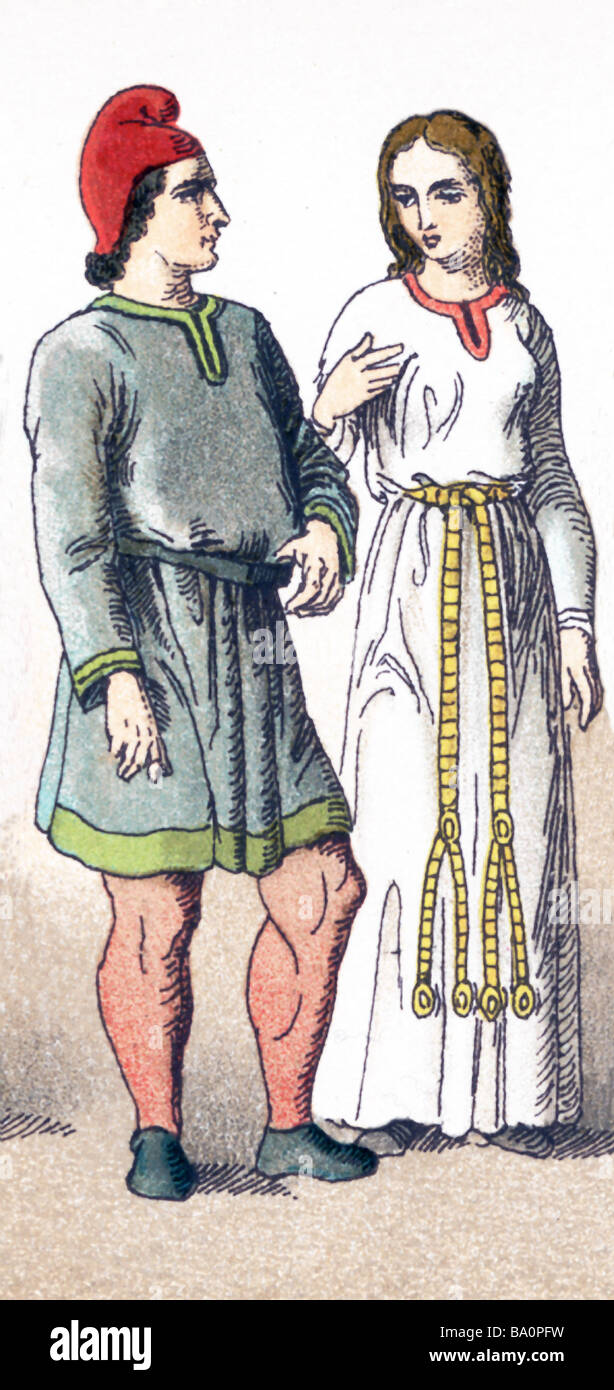 French Commoners in A.D. 1000 Stock Photohttps://www.alamy.com/image-license-details/?v=1https://www.alamy.com/stock-photo-french-commoners-in-ad-1000-23374621.html
French Commoners in A.D. 1000 Stock Photohttps://www.alamy.com/image-license-details/?v=1https://www.alamy.com/stock-photo-french-commoners-in-ad-1000-23374621.htmlRFBA0PFW–French Commoners in A.D. 1000
 Franc archers, reproduced from the fifteenth century Painted Hangings of Rheims. Franc archers were French commoners who were Stock Photohttps://www.alamy.com/image-license-details/?v=1https://www.alamy.com/stock-photo-franc-archers-reproduced-from-the-fifteenth-century-painted-hangings-83335174.html
Franc archers, reproduced from the fifteenth century Painted Hangings of Rheims. Franc archers were French commoners who were Stock Photohttps://www.alamy.com/image-license-details/?v=1https://www.alamy.com/stock-photo-franc-archers-reproduced-from-the-fifteenth-century-painted-hangings-83335174.htmlRMERG6T6–Franc archers, reproduced from the fifteenth century Painted Hangings of Rheims. Franc archers were French commoners who were
 History of France. Fête de la Fédération (Festival of the Federation). Commemoration of the first anniversary of the Storming of the Bastille, symbol of the beginning of the French Revolution. Paris, Champ de Mars, 14 July 1790. Work on the Champ de Mars for the celebration of the event. On 1 July 1790, more than a thousand volunteer workers began excavation work on the location chosen for the staging of the ceremony. The Champ de Mars was to be transformed into a circus with a capacity of 100,000 spectators, at the centre of which the altar of the Fatherland was to be erected. Workers from th Stock Photohttps://www.alamy.com/image-license-details/?v=1https://www.alamy.com/history-of-france-fte-de-la-fdration-festival-of-the-federation-commemoration-of-the-first-anniversary-of-the-storming-of-the-bastille-symbol-of-the-beginning-of-the-french-revolution-paris-champ-de-mars-14-july-1790-work-on-the-champ-de-mars-for-the-celebration-of-the-event-on-1-july-1790-more-than-a-thousand-volunteer-workers-began-excavation-work-on-the-location-chosen-for-the-staging-of-the-ceremony-the-champ-de-mars-was-to-be-transformed-into-a-circus-with-a-capacity-of-100000-spectators-at-the-centre-of-which-the-altar-of-the-fatherland-was-to-be-erected-workers-from-th-image627389110.html
History of France. Fête de la Fédération (Festival of the Federation). Commemoration of the first anniversary of the Storming of the Bastille, symbol of the beginning of the French Revolution. Paris, Champ de Mars, 14 July 1790. Work on the Champ de Mars for the celebration of the event. On 1 July 1790, more than a thousand volunteer workers began excavation work on the location chosen for the staging of the ceremony. The Champ de Mars was to be transformed into a circus with a capacity of 100,000 spectators, at the centre of which the altar of the Fatherland was to be erected. Workers from th Stock Photohttps://www.alamy.com/image-license-details/?v=1https://www.alamy.com/history-of-france-fte-de-la-fdration-festival-of-the-federation-commemoration-of-the-first-anniversary-of-the-storming-of-the-bastille-symbol-of-the-beginning-of-the-french-revolution-paris-champ-de-mars-14-july-1790-work-on-the-champ-de-mars-for-the-celebration-of-the-event-on-1-july-1790-more-than-a-thousand-volunteer-workers-began-excavation-work-on-the-location-chosen-for-the-staging-of-the-ceremony-the-champ-de-mars-was-to-be-transformed-into-a-circus-with-a-capacity-of-100000-spectators-at-the-centre-of-which-the-altar-of-the-fatherland-was-to-be-erected-workers-from-th-image627389110.htmlRM2YCM15X–History of France. Fête de la Fédération (Festival of the Federation). Commemoration of the first anniversary of the Storming of the Bastille, symbol of the beginning of the French Revolution. Paris, Champ de Mars, 14 July 1790. Work on the Champ de Mars for the celebration of the event. On 1 July 1790, more than a thousand volunteer workers began excavation work on the location chosen for the staging of the ceremony. The Champ de Mars was to be transformed into a circus with a capacity of 100,000 spectators, at the centre of which the altar of the Fatherland was to be erected. Workers from th
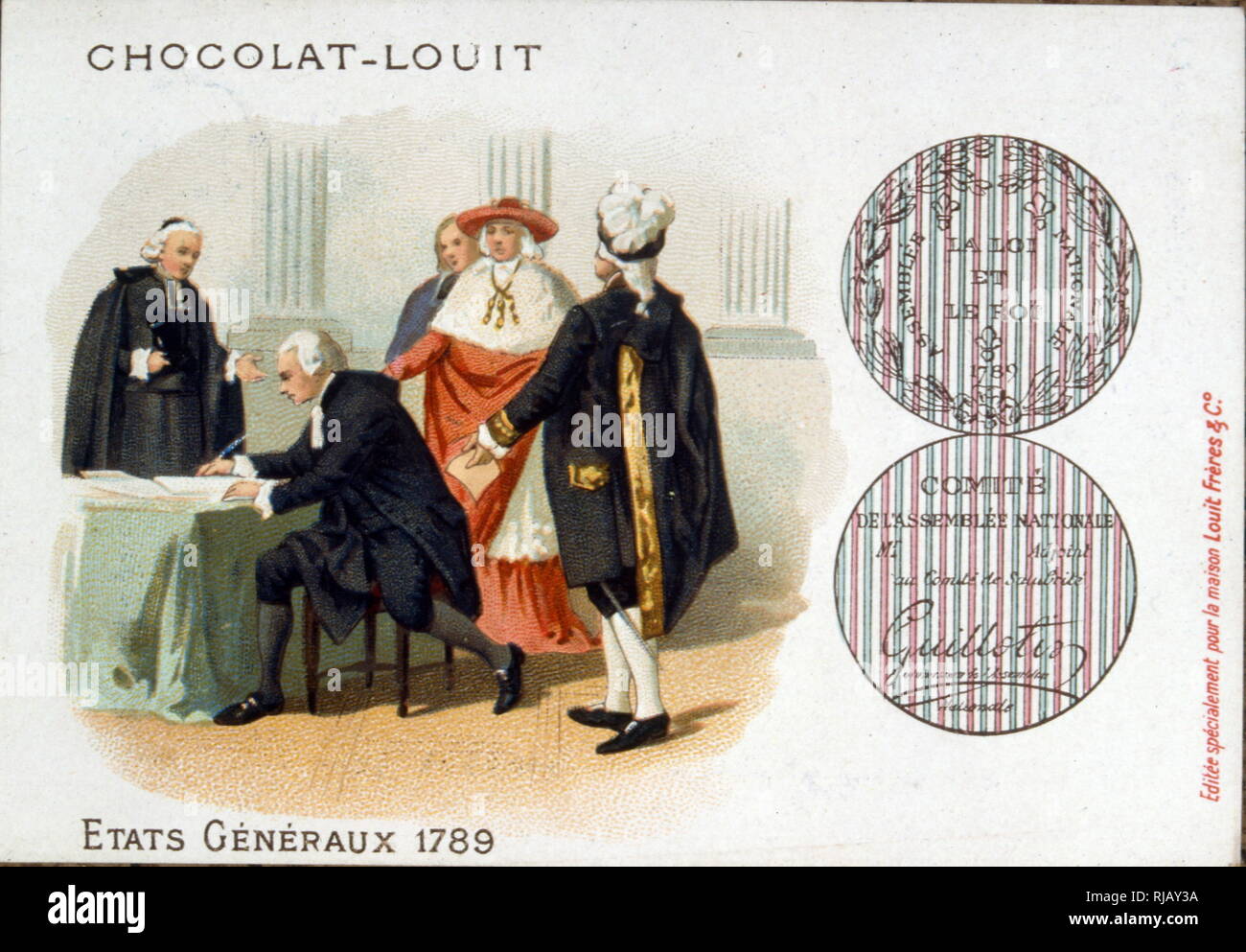 Illustration showing the estates general; a general assembly representing the French estates of the realm: the clergy (First Estate), the nobility (Second Estate), and the commoners (Third Estate). Summoned by King Louis XVI, it was brought to an end when the Third Estate formed into a National Assembly, inviting the other two to join, against the wishes of the King. This signals the outbreak of the French Revolution. Stock Photohttps://www.alamy.com/image-license-details/?v=1https://www.alamy.com/illustration-showing-the-estates-general-a-general-assembly-representing-the-french-estates-of-the-realm-the-clergy-first-estate-the-nobility-second-estate-and-the-commoners-third-estate-summoned-by-king-louis-xvi-it-was-brought-to-an-end-when-the-third-estate-formed-into-a-national-assembly-inviting-the-other-two-to-join-against-the-wishes-of-the-king-this-signals-the-outbreak-of-the-french-revolution-image235039374.html
Illustration showing the estates general; a general assembly representing the French estates of the realm: the clergy (First Estate), the nobility (Second Estate), and the commoners (Third Estate). Summoned by King Louis XVI, it was brought to an end when the Third Estate formed into a National Assembly, inviting the other two to join, against the wishes of the King. This signals the outbreak of the French Revolution. Stock Photohttps://www.alamy.com/image-license-details/?v=1https://www.alamy.com/illustration-showing-the-estates-general-a-general-assembly-representing-the-french-estates-of-the-realm-the-clergy-first-estate-the-nobility-second-estate-and-the-commoners-third-estate-summoned-by-king-louis-xvi-it-was-brought-to-an-end-when-the-third-estate-formed-into-a-national-assembly-inviting-the-other-two-to-join-against-the-wishes-of-the-king-this-signals-the-outbreak-of-the-french-revolution-image235039374.htmlRMRJAY3A–Illustration showing the estates general; a general assembly representing the French estates of the realm: the clergy (First Estate), the nobility (Second Estate), and the commoners (Third Estate). Summoned by King Louis XVI, it was brought to an end when the Third Estate formed into a National Assembly, inviting the other two to join, against the wishes of the King. This signals the outbreak of the French Revolution.
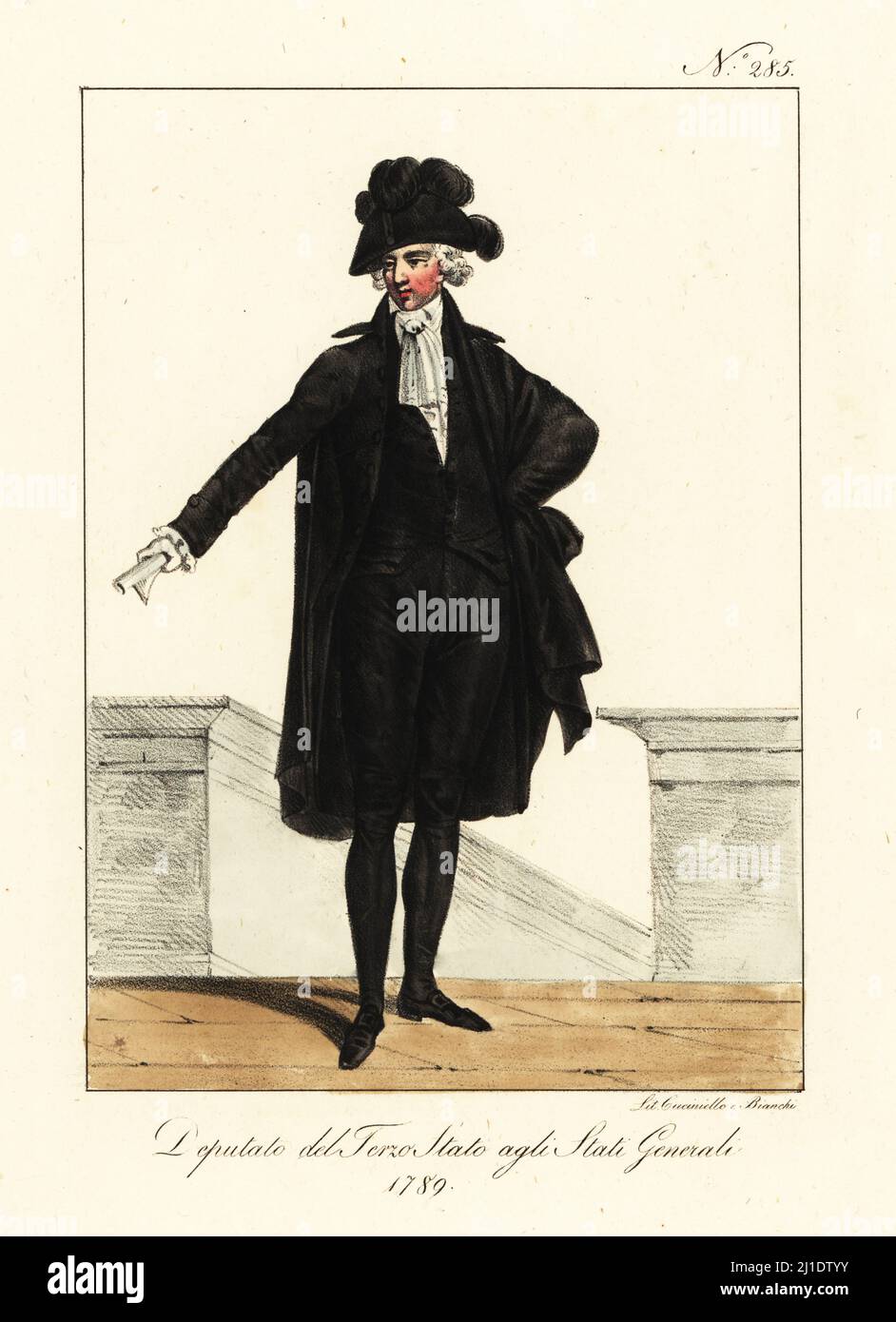 Costume of a Deputy of the Third Estate, or commoners, at the Estates General of 1789, at the start of the French Revolution. In plumed hat, black coat and hose, white cravat and gloves. Depute du Tiers-Etat, aux Etats Generaux. Handcoloured lithograph by Lorenzo Bianchi and Domenico Cuciniello after Hippolyte Lecomte from Costumi civili e militari della monarchia francese dal 1200 al 1820, Naples, 1825. Italian edition of Lecomte’s Civilian and military costumes of the French monarchy from 1200 to 1820. Stock Photohttps://www.alamy.com/image-license-details/?v=1https://www.alamy.com/costume-of-a-deputy-of-the-third-estate-or-commoners-at-the-estates-general-of-1789-at-the-start-of-the-french-revolution-in-plumed-hat-black-coat-and-hose-white-cravat-and-gloves-depute-du-tiers-etat-aux-etats-generaux-handcoloured-lithograph-by-lorenzo-bianchi-and-domenico-cuciniello-after-hippolyte-lecomte-from-costumi-civili-e-militari-della-monarchia-francese-dal-1200-al-1820-naples-1825-italian-edition-of-lecomtes-civilian-and-military-costumes-of-the-french-monarchy-from-1200-to-1820-image465599567.html
Costume of a Deputy of the Third Estate, or commoners, at the Estates General of 1789, at the start of the French Revolution. In plumed hat, black coat and hose, white cravat and gloves. Depute du Tiers-Etat, aux Etats Generaux. Handcoloured lithograph by Lorenzo Bianchi and Domenico Cuciniello after Hippolyte Lecomte from Costumi civili e militari della monarchia francese dal 1200 al 1820, Naples, 1825. Italian edition of Lecomte’s Civilian and military costumes of the French monarchy from 1200 to 1820. Stock Photohttps://www.alamy.com/image-license-details/?v=1https://www.alamy.com/costume-of-a-deputy-of-the-third-estate-or-commoners-at-the-estates-general-of-1789-at-the-start-of-the-french-revolution-in-plumed-hat-black-coat-and-hose-white-cravat-and-gloves-depute-du-tiers-etat-aux-etats-generaux-handcoloured-lithograph-by-lorenzo-bianchi-and-domenico-cuciniello-after-hippolyte-lecomte-from-costumi-civili-e-militari-della-monarchia-francese-dal-1200-al-1820-naples-1825-italian-edition-of-lecomtes-civilian-and-military-costumes-of-the-french-monarchy-from-1200-to-1820-image465599567.htmlRM2J1DTYY–Costume of a Deputy of the Third Estate, or commoners, at the Estates General of 1789, at the start of the French Revolution. In plumed hat, black coat and hose, white cravat and gloves. Depute du Tiers-Etat, aux Etats Generaux. Handcoloured lithograph by Lorenzo Bianchi and Domenico Cuciniello after Hippolyte Lecomte from Costumi civili e militari della monarchia francese dal 1200 al 1820, Naples, 1825. Italian edition of Lecomte’s Civilian and military costumes of the French monarchy from 1200 to 1820.
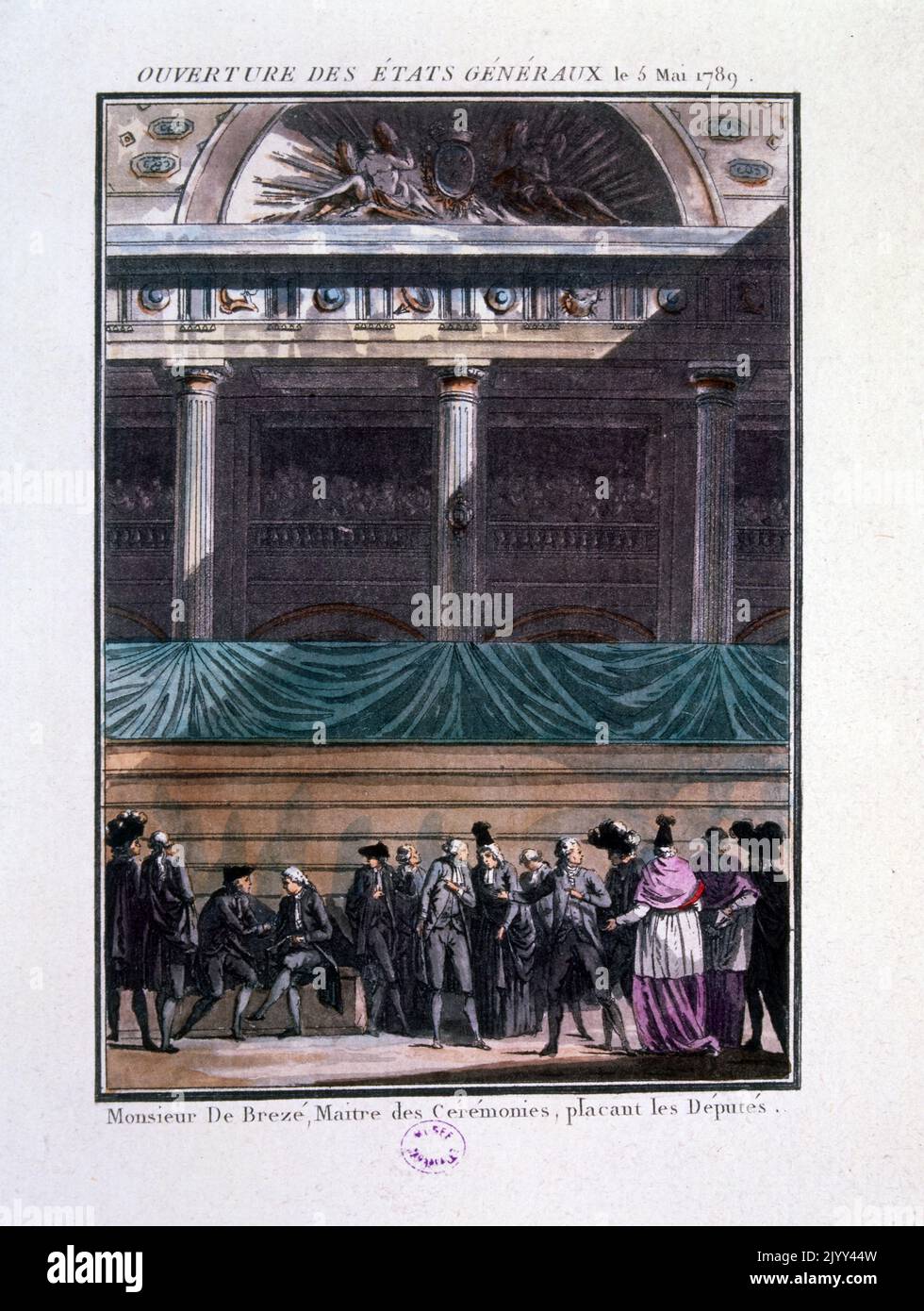 Inaugural meeting of the Estates General, 5th May 1789. P The estates general was a general assembly representing the French estates of the realm: the clergy (First Estate), the nobility (Second Estate), and the commoners (Third Estate). Summoned by King Louis XVI, it was brought to an end when the Third Estate formed into a National Assembly, inviting the other two to join, against the wishes of the King. This signals the outbreak of the French Revolution. Stock Photohttps://www.alamy.com/image-license-details/?v=1https://www.alamy.com/inaugural-meeting-of-the-estates-general-5th-may-1789-p-the-estates-general-was-a-general-assembly-representing-the-french-estates-of-the-realm-the-clergy-first-estate-the-nobility-second-estate-and-the-commoners-third-estate-summoned-by-king-louis-xvi-it-was-brought-to-an-end-when-the-third-estate-formed-into-a-national-assembly-inviting-the-other-two-to-join-against-the-wishes-of-the-king-this-signals-the-outbreak-of-the-french-revolution-image481871625.html
Inaugural meeting of the Estates General, 5th May 1789. P The estates general was a general assembly representing the French estates of the realm: the clergy (First Estate), the nobility (Second Estate), and the commoners (Third Estate). Summoned by King Louis XVI, it was brought to an end when the Third Estate formed into a National Assembly, inviting the other two to join, against the wishes of the King. This signals the outbreak of the French Revolution. Stock Photohttps://www.alamy.com/image-license-details/?v=1https://www.alamy.com/inaugural-meeting-of-the-estates-general-5th-may-1789-p-the-estates-general-was-a-general-assembly-representing-the-french-estates-of-the-realm-the-clergy-first-estate-the-nobility-second-estate-and-the-commoners-third-estate-summoned-by-king-louis-xvi-it-was-brought-to-an-end-when-the-third-estate-formed-into-a-national-assembly-inviting-the-other-two-to-join-against-the-wishes-of-the-king-this-signals-the-outbreak-of-the-french-revolution-image481871625.htmlRM2JYY44W–Inaugural meeting of the Estates General, 5th May 1789. P The estates general was a general assembly representing the French estates of the realm: the clergy (First Estate), the nobility (Second Estate), and the commoners (Third Estate). Summoned by King Louis XVI, it was brought to an end when the Third Estate formed into a National Assembly, inviting the other two to join, against the wishes of the King. This signals the outbreak of the French Revolution.
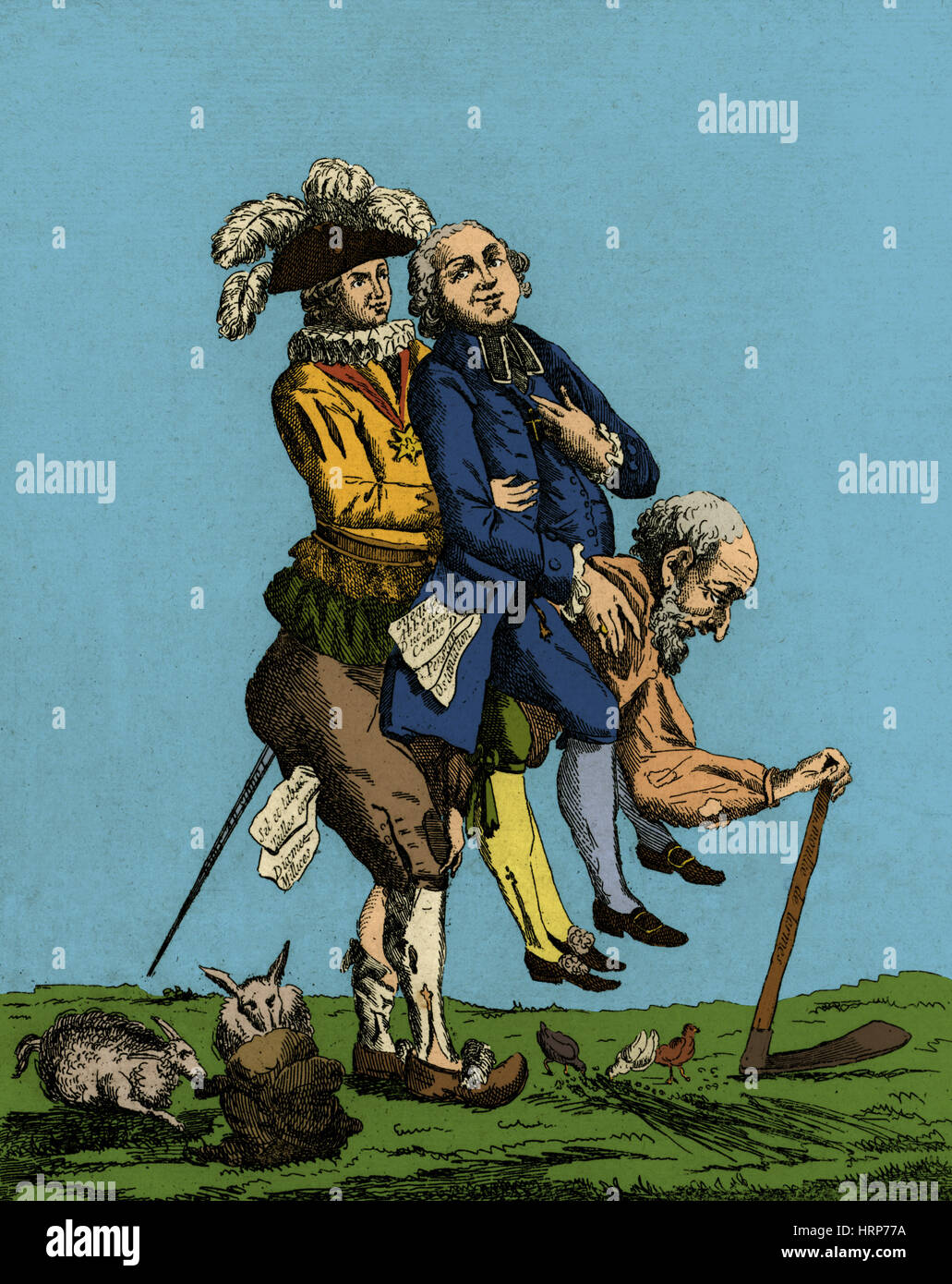 French Revolution, Estates-General of 1789 Stock Photohttps://www.alamy.com/image-license-details/?v=1https://www.alamy.com/stock-photo-french-revolution-estates-general-of-1789-135098302.html
French Revolution, Estates-General of 1789 Stock Photohttps://www.alamy.com/image-license-details/?v=1https://www.alamy.com/stock-photo-french-revolution-estates-general-of-1789-135098302.htmlRMHRP77A–French Revolution, Estates-General of 1789
 The Franc-archer ('free-archer') of Bagnolet. The franc-archers were a militia of commoners who quickly became unpopular due to the indiscipline of their soldiers. Circa 1450 Illustration by Job published in the book 'Allons, Enfants de la Patrie !...' by Jean Richepin. Published by A. Mame et fils in 1920. Stock Photohttps://www.alamy.com/image-license-details/?v=1https://www.alamy.com/the-franc-archer-free-archer-of-bagnolet-the-franc-archers-were-a-militia-of-commoners-who-quickly-became-unpopular-due-to-the-indiscipline-of-their-soldiers-circa-1450-illustration-by-job-published-in-the-book-allons-enfants-de-la-patrie-!-by-jean-richepin-published-by-a-mame-et-fils-in-1920-image601307491.html
The Franc-archer ('free-archer') of Bagnolet. The franc-archers were a militia of commoners who quickly became unpopular due to the indiscipline of their soldiers. Circa 1450 Illustration by Job published in the book 'Allons, Enfants de la Patrie !...' by Jean Richepin. Published by A. Mame et fils in 1920. Stock Photohttps://www.alamy.com/image-license-details/?v=1https://www.alamy.com/the-franc-archer-free-archer-of-bagnolet-the-franc-archers-were-a-militia-of-commoners-who-quickly-became-unpopular-due-to-the-indiscipline-of-their-soldiers-circa-1450-illustration-by-job-published-in-the-book-allons-enfants-de-la-patrie-!-by-jean-richepin-published-by-a-mame-et-fils-in-1920-image601307491.htmlRM2WX7WRF–The Franc-archer ('free-archer') of Bagnolet. The franc-archers were a militia of commoners who quickly became unpopular due to the indiscipline of their soldiers. Circa 1450 Illustration by Job published in the book 'Allons, Enfants de la Patrie !...' by Jean Richepin. Published by A. Mame et fils in 1920.
 Costume of a Deputy of the Third Estate, or commoners, at the Estates General of 1789, at the start of the French Revolution. In plumed hat, black coat and hose, white cravat and gloves. Depute du Tiers-Etat, aux Etats Generaux. Handcoloured lithograph by Lorenzo Bianchi and Domenico Cuciniello after Hippolyte Lecomte from Costumi civili e militari della monarchia francese dal 1200 al 1820, Naples, 1825. Italian edition of Lecomtes Civilian and military costumes of the French monarchy from 1200 to 1820. Stock Photohttps://www.alamy.com/image-license-details/?v=1https://www.alamy.com/costume-of-a-deputy-of-the-third-estate-or-commoners-at-the-estates-general-of-1789-at-the-start-of-the-french-revolution-in-plumed-hat-black-coat-and-hose-white-cravat-and-gloves-depute-du-tiers-etat-aux-etats-generaux-handcoloured-lithograph-by-lorenzo-bianchi-and-domenico-cuciniello-after-hippolyte-lecomte-from-costumi-civili-e-militari-della-monarchia-francese-dal-1200-al-1820-naples-1825-italian-edition-of-lecomtes-civilian-and-military-costumes-of-the-french-monarchy-from-1200-to-1820-image571907879.html
Costume of a Deputy of the Third Estate, or commoners, at the Estates General of 1789, at the start of the French Revolution. In plumed hat, black coat and hose, white cravat and gloves. Depute du Tiers-Etat, aux Etats Generaux. Handcoloured lithograph by Lorenzo Bianchi and Domenico Cuciniello after Hippolyte Lecomte from Costumi civili e militari della monarchia francese dal 1200 al 1820, Naples, 1825. Italian edition of Lecomtes Civilian and military costumes of the French monarchy from 1200 to 1820. Stock Photohttps://www.alamy.com/image-license-details/?v=1https://www.alamy.com/costume-of-a-deputy-of-the-third-estate-or-commoners-at-the-estates-general-of-1789-at-the-start-of-the-french-revolution-in-plumed-hat-black-coat-and-hose-white-cravat-and-gloves-depute-du-tiers-etat-aux-etats-generaux-handcoloured-lithograph-by-lorenzo-bianchi-and-domenico-cuciniello-after-hippolyte-lecomte-from-costumi-civili-e-militari-della-monarchia-francese-dal-1200-al-1820-naples-1825-italian-edition-of-lecomtes-civilian-and-military-costumes-of-the-french-monarchy-from-1200-to-1820-image571907879.htmlRM2T6CJ9B–Costume of a Deputy of the Third Estate, or commoners, at the Estates General of 1789, at the start of the French Revolution. In plumed hat, black coat and hose, white cravat and gloves. Depute du Tiers-Etat, aux Etats Generaux. Handcoloured lithograph by Lorenzo Bianchi and Domenico Cuciniello after Hippolyte Lecomte from Costumi civili e militari della monarchia francese dal 1200 al 1820, Naples, 1825. Italian edition of Lecomtes Civilian and military costumes of the French monarchy from 1200 to 1820.
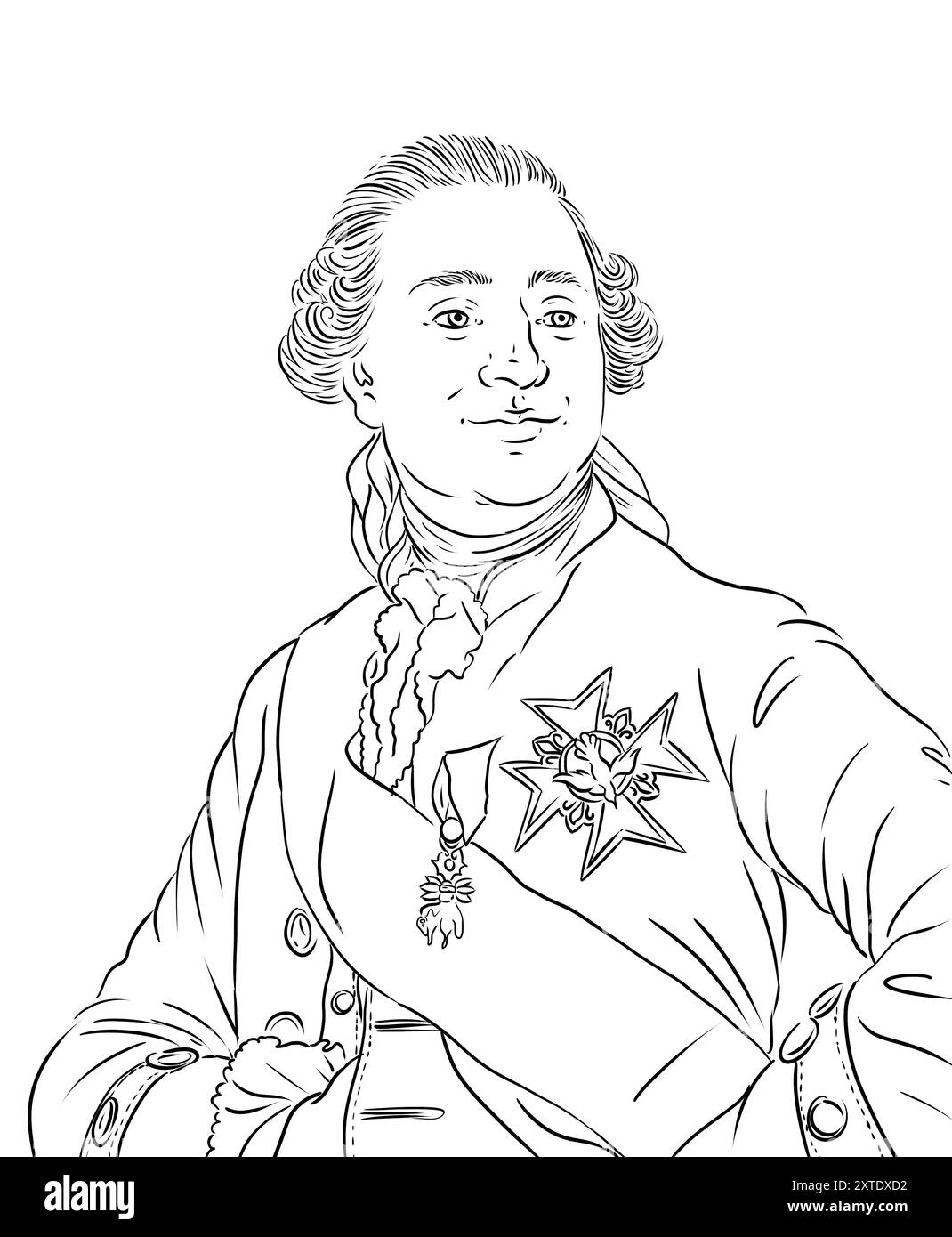 Portrait of Louis 16, Louis XVI, famous french monarch during the french revolution, and husband of Queen Marie-Antoinette Stock Photohttps://www.alamy.com/image-license-details/?v=1https://www.alamy.com/portrait-of-louis-16-louis-xvi-famous-french-monarch-during-the-french-revolution-and-husband-of-queen-marie-antoinette-image617420750.html
Portrait of Louis 16, Louis XVI, famous french monarch during the french revolution, and husband of Queen Marie-Antoinette Stock Photohttps://www.alamy.com/image-license-details/?v=1https://www.alamy.com/portrait-of-louis-16-louis-xvi-famous-french-monarch-during-the-french-revolution-and-husband-of-queen-marie-antoinette-image617420750.htmlRM2XTDXD2–Portrait of Louis 16, Louis XVI, famous french monarch during the french revolution, and husband of Queen Marie-Antoinette
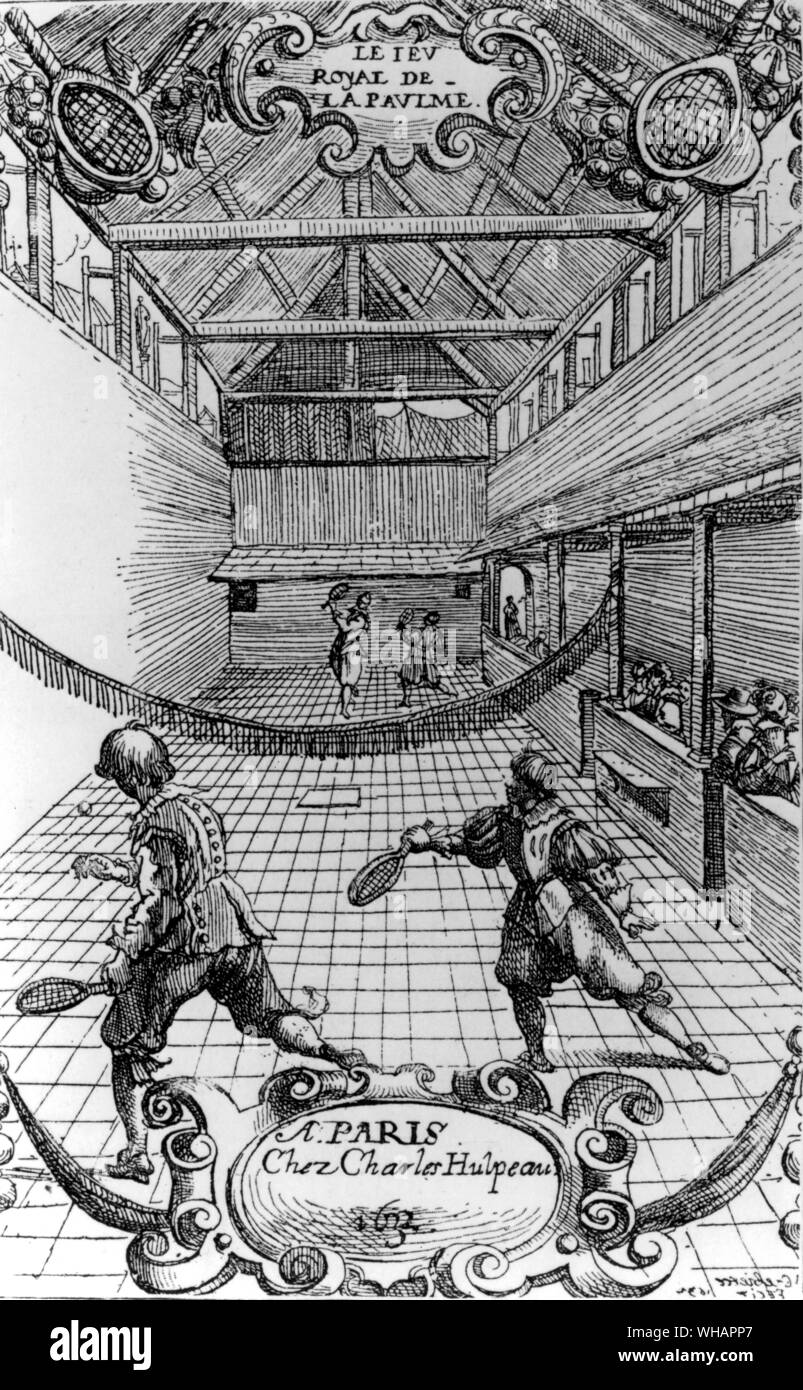 Built under Louis XIV, the Jeu de Paume is an indoor tennis court insofar as the game played there was an ancestor of modern tennis. On June 20, 1789, this hall was the site of a major event in the French Revolution. Back in May of that year, Louis XVI convoked the three orders of the Estates General (Nobles, Clergy, and Commoners) to discuss needed reforms. They met in the large Hall of Revels (which today houses the Baroque Music Centre). Representatives of the commoners, unable to meet independently of the nobles and clergy, sought a place where they could discuss things among themselves; Stock Photohttps://www.alamy.com/image-license-details/?v=1https://www.alamy.com/built-under-louis-xiv-the-jeu-de-paume-is-an-indoor-tennis-court-insofar-as-the-game-played-there-was-an-ancestor-of-modern-tennis-on-june-20-1789-this-hall-was-the-site-of-a-major-event-in-the-french-revolution-back-in-may-of-that-year-louis-xvi-convoked-the-three-orders-of-the-estates-general-nobles-clergy-and-commoners-to-discuss-needed-reforms-they-met-in-the-large-hall-of-revels-which-today-houses-the-baroque-music-centre-representatives-of-the-commoners-unable-to-meet-independently-of-the-nobles-and-clergy-sought-a-place-where-they-could-discuss-things-among-themselves-image268842063.html
Built under Louis XIV, the Jeu de Paume is an indoor tennis court insofar as the game played there was an ancestor of modern tennis. On June 20, 1789, this hall was the site of a major event in the French Revolution. Back in May of that year, Louis XVI convoked the three orders of the Estates General (Nobles, Clergy, and Commoners) to discuss needed reforms. They met in the large Hall of Revels (which today houses the Baroque Music Centre). Representatives of the commoners, unable to meet independently of the nobles and clergy, sought a place where they could discuss things among themselves; Stock Photohttps://www.alamy.com/image-license-details/?v=1https://www.alamy.com/built-under-louis-xiv-the-jeu-de-paume-is-an-indoor-tennis-court-insofar-as-the-game-played-there-was-an-ancestor-of-modern-tennis-on-june-20-1789-this-hall-was-the-site-of-a-major-event-in-the-french-revolution-back-in-may-of-that-year-louis-xvi-convoked-the-three-orders-of-the-estates-general-nobles-clergy-and-commoners-to-discuss-needed-reforms-they-met-in-the-large-hall-of-revels-which-today-houses-the-baroque-music-centre-representatives-of-the-commoners-unable-to-meet-independently-of-the-nobles-and-clergy-sought-a-place-where-they-could-discuss-things-among-themselves-image268842063.htmlRMWHAPP7–Built under Louis XIV, the Jeu de Paume is an indoor tennis court insofar as the game played there was an ancestor of modern tennis. On June 20, 1789, this hall was the site of a major event in the French Revolution. Back in May of that year, Louis XVI convoked the three orders of the Estates General (Nobles, Clergy, and Commoners) to discuss needed reforms. They met in the large Hall of Revels (which today houses the Baroque Music Centre). Representatives of the commoners, unable to meet independently of the nobles and clergy, sought a place where they could discuss things among themselves;
![Le marquis de Deux-Brézé [sic] et Mirabeau, le 23 juin 1789, (1831). Henri Evrard, marquis de Dreux-Brézé, and Honore-Gabriel de Riqueti, comte de Mirabeau at the Estates General on 23 June 1789. This was a general assembly representing the French estates of the realm: the clergy (First Estate), the nobility (Second Estate), and the commoners (Third Estate). It was the last of the Estates General of the Kingdom of France. The Third Estate formed the National Assembly and, against the wishes of King Louis XVI, invited the other two estates to join. This signalled the outbrea Stock Photo Le marquis de Deux-Brézé [sic] et Mirabeau, le 23 juin 1789, (1831). Henri Evrard, marquis de Dreux-Brézé, and Honore-Gabriel de Riqueti, comte de Mirabeau at the Estates General on 23 June 1789. This was a general assembly representing the French estates of the realm: the clergy (First Estate), the nobility (Second Estate), and the commoners (Third Estate). It was the last of the Estates General of the Kingdom of France. The Third Estate formed the National Assembly and, against the wishes of King Louis XVI, invited the other two estates to join. This signalled the outbrea Stock Photo](https://c8.alamy.com/comp/2K5DGBC/le-marquis-de-deux-brxe9zxe9-sic-et-mirabeau-le-23-juin-1789-1831-henri-evrard-marquis-de-dreux-brxe9zxe9-and-honore-gabriel-de-riqueti-comte-de-mirabeau-at-the-estates-general-on-23-june-1789-this-was-a-general-assembly-representing-the-french-estates-of-the-realm-the-clergy-first-estate-the-nobility-second-estate-and-the-commoners-third-estate-it-was-the-last-of-the-estates-general-of-the-kingdom-of-france-the-third-estate-formed-the-national-assembly-and-against-the-wishes-of-king-louis-xvi-invited-the-other-two-estates-to-join-this-signalled-the-outbrea-2K5DGBC.jpg) Le marquis de Deux-Brézé [sic] et Mirabeau, le 23 juin 1789, (1831). Henri Evrard, marquis de Dreux-Brézé, and Honore-Gabriel de Riqueti, comte de Mirabeau at the Estates General on 23 June 1789. This was a general assembly representing the French estates of the realm: the clergy (First Estate), the nobility (Second Estate), and the commoners (Third Estate). It was the last of the Estates General of the Kingdom of France. The Third Estate formed the National Assembly and, against the wishes of King Louis XVI, invited the other two estates to join. This signalled the outbrea Stock Photohttps://www.alamy.com/image-license-details/?v=1https://www.alamy.com/le-marquis-de-deux-brxe9zxe9-sic-et-mirabeau-le-23-juin-1789-1831-henri-evrard-marquis-de-dreux-brxe9zxe9-and-honore-gabriel-de-riqueti-comte-de-mirabeau-at-the-estates-general-on-23-june-1789-this-was-a-general-assembly-representing-the-french-estates-of-the-realm-the-clergy-first-estate-the-nobility-second-estate-and-the-commoners-third-estate-it-was-the-last-of-the-estates-general-of-the-kingdom-of-france-the-third-estate-formed-the-national-assembly-and-against-the-wishes-of-king-louis-xvi-invited-the-other-two-estates-to-join-this-signalled-the-outbrea-image485261824.html
Le marquis de Deux-Brézé [sic] et Mirabeau, le 23 juin 1789, (1831). Henri Evrard, marquis de Dreux-Brézé, and Honore-Gabriel de Riqueti, comte de Mirabeau at the Estates General on 23 June 1789. This was a general assembly representing the French estates of the realm: the clergy (First Estate), the nobility (Second Estate), and the commoners (Third Estate). It was the last of the Estates General of the Kingdom of France. The Third Estate formed the National Assembly and, against the wishes of King Louis XVI, invited the other two estates to join. This signalled the outbrea Stock Photohttps://www.alamy.com/image-license-details/?v=1https://www.alamy.com/le-marquis-de-deux-brxe9zxe9-sic-et-mirabeau-le-23-juin-1789-1831-henri-evrard-marquis-de-dreux-brxe9zxe9-and-honore-gabriel-de-riqueti-comte-de-mirabeau-at-the-estates-general-on-23-june-1789-this-was-a-general-assembly-representing-the-french-estates-of-the-realm-the-clergy-first-estate-the-nobility-second-estate-and-the-commoners-third-estate-it-was-the-last-of-the-estates-general-of-the-kingdom-of-france-the-third-estate-formed-the-national-assembly-and-against-the-wishes-of-king-louis-xvi-invited-the-other-two-estates-to-join-this-signalled-the-outbrea-image485261824.htmlRM2K5DGBC–Le marquis de Deux-Brézé [sic] et Mirabeau, le 23 juin 1789, (1831). Henri Evrard, marquis de Dreux-Brézé, and Honore-Gabriel de Riqueti, comte de Mirabeau at the Estates General on 23 June 1789. This was a general assembly representing the French estates of the realm: the clergy (First Estate), the nobility (Second Estate), and the commoners (Third Estate). It was the last of the Estates General of the Kingdom of France. The Third Estate formed the National Assembly and, against the wishes of King Louis XVI, invited the other two estates to join. This signalled the outbrea
 France/Indonesia: Engraving of Javanese Dancers at the Exposition Universelle, Paris, 1889. Javanese dance is the dances and art forms that were created and influenced by Javanese culture. Javanese dance is usually associated with the courtly, refined and sophisticated culture of the Javanese kratons, such as the Bedhaya and Srimpi dance. However, in a wider sense, Javanese dance also includes the dances of Javanese commoners and villagers such as Ronggeng, Tayub, Reog, and Kuda Lumping. Javanese dance is usually associated with Wayang wong, and the palaces of Yogyakarta and Suraka. Stock Photohttps://www.alamy.com/image-license-details/?v=1https://www.alamy.com/franceindonesia-engraving-of-javanese-dancers-at-the-exposition-universelle-paris-1889-javanese-dance-is-the-dances-and-art-forms-that-were-created-and-influenced-by-javanese-culture-javanese-dance-is-usually-associated-with-the-courtly-refined-and-sophisticated-culture-of-the-javanese-kratons-such-as-the-bedhaya-and-srimpi-dance-however-in-a-wider-sense-javanese-dance-also-includes-the-dances-of-javanese-commoners-and-villagers-such-as-ronggeng-tayub-reog-and-kuda-lumping-javanese-dance-is-usually-associated-with-wayang-wong-and-the-palaces-of-yogyakarta-and-suraka-image344239571.html
France/Indonesia: Engraving of Javanese Dancers at the Exposition Universelle, Paris, 1889. Javanese dance is the dances and art forms that were created and influenced by Javanese culture. Javanese dance is usually associated with the courtly, refined and sophisticated culture of the Javanese kratons, such as the Bedhaya and Srimpi dance. However, in a wider sense, Javanese dance also includes the dances of Javanese commoners and villagers such as Ronggeng, Tayub, Reog, and Kuda Lumping. Javanese dance is usually associated with Wayang wong, and the palaces of Yogyakarta and Suraka. Stock Photohttps://www.alamy.com/image-license-details/?v=1https://www.alamy.com/franceindonesia-engraving-of-javanese-dancers-at-the-exposition-universelle-paris-1889-javanese-dance-is-the-dances-and-art-forms-that-were-created-and-influenced-by-javanese-culture-javanese-dance-is-usually-associated-with-the-courtly-refined-and-sophisticated-culture-of-the-javanese-kratons-such-as-the-bedhaya-and-srimpi-dance-however-in-a-wider-sense-javanese-dance-also-includes-the-dances-of-javanese-commoners-and-villagers-such-as-ronggeng-tayub-reog-and-kuda-lumping-javanese-dance-is-usually-associated-with-wayang-wong-and-the-palaces-of-yogyakarta-and-suraka-image344239571.htmlRM2B01D2B–France/Indonesia: Engraving of Javanese Dancers at the Exposition Universelle, Paris, 1889. Javanese dance is the dances and art forms that were created and influenced by Javanese culture. Javanese dance is usually associated with the courtly, refined and sophisticated culture of the Javanese kratons, such as the Bedhaya and Srimpi dance. However, in a wider sense, Javanese dance also includes the dances of Javanese commoners and villagers such as Ronggeng, Tayub, Reog, and Kuda Lumping. Javanese dance is usually associated with Wayang wong, and the palaces of Yogyakarta and Suraka.
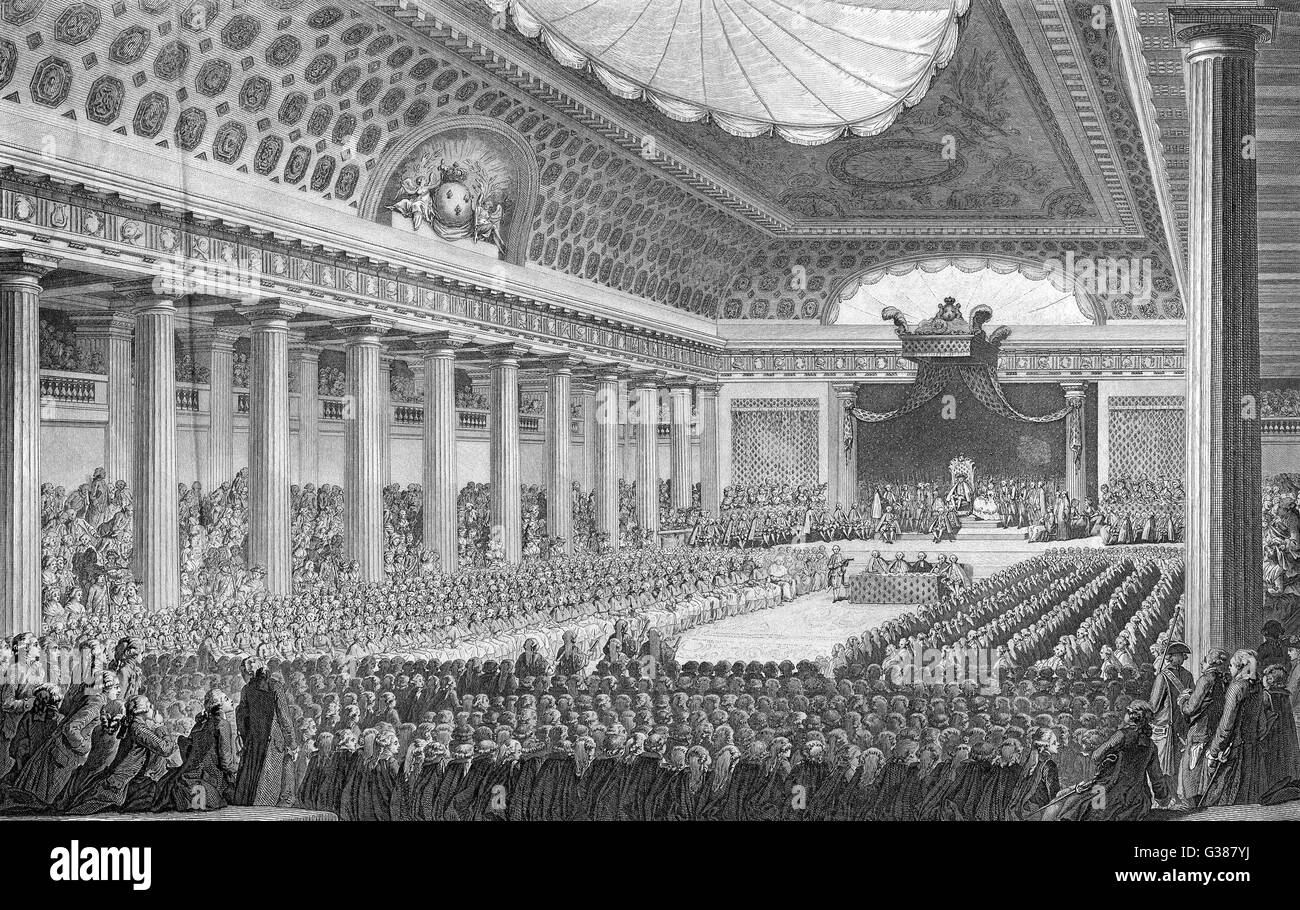 OPENING OF STATES-GENERAL Stock Photohttps://www.alamy.com/image-license-details/?v=1https://www.alamy.com/stock-photo-opening-of-states-general-105288054.html
OPENING OF STATES-GENERAL Stock Photohttps://www.alamy.com/image-license-details/?v=1https://www.alamy.com/stock-photo-opening-of-states-general-105288054.htmlRMG387YJ–OPENING OF STATES-GENERAL
 . A genealogical and heraldic history of the commoners of Great Britain and Ireland enjoying territorial possessions or high official rank, but uninvested with heritable honours. ty of Clare, and has one daughter. II. Morgan, M. P. for the county of Meath. III. John, M. P. for Yougal. IV. Daniel. I. Ellen, m. to Christopher Fitzsimon, esq. of GlancuUen, M.P. for the county of Dublin. II. Catherine, m. to Charles OConnell, esq. M. P. for the county of Kerry. III. Elizabeth, m. to Nicholas Joseph French, esq. of Fort William, in the countyof Roscommon. Mr. OConnell succeeded his father in 1809, Stock Photohttps://www.alamy.com/image-license-details/?v=1https://www.alamy.com/a-genealogical-and-heraldic-history-of-the-commoners-of-great-britain-and-ireland-enjoying-territorial-possessions-or-high-official-rank-but-uninvested-with-heritable-honours-ty-of-clare-and-has-one-daughter-ii-morgan-m-p-for-the-county-of-meath-iii-john-m-p-for-yougal-iv-daniel-i-ellen-m-to-christopher-fitzsimon-esq-of-glancuuen-mp-for-the-county-of-dublin-ii-catherine-m-to-charles-oconnell-esq-m-p-for-the-county-of-kerry-iii-elizabeth-m-to-nicholas-joseph-french-esq-of-fort-william-in-the-countyof-roscommon-mr-oconnell-succeeded-his-father-in-1809-image370747950.html
. A genealogical and heraldic history of the commoners of Great Britain and Ireland enjoying territorial possessions or high official rank, but uninvested with heritable honours. ty of Clare, and has one daughter. II. Morgan, M. P. for the county of Meath. III. John, M. P. for Yougal. IV. Daniel. I. Ellen, m. to Christopher Fitzsimon, esq. of GlancuUen, M.P. for the county of Dublin. II. Catherine, m. to Charles OConnell, esq. M. P. for the county of Kerry. III. Elizabeth, m. to Nicholas Joseph French, esq. of Fort William, in the countyof Roscommon. Mr. OConnell succeeded his father in 1809, Stock Photohttps://www.alamy.com/image-license-details/?v=1https://www.alamy.com/a-genealogical-and-heraldic-history-of-the-commoners-of-great-britain-and-ireland-enjoying-territorial-possessions-or-high-official-rank-but-uninvested-with-heritable-honours-ty-of-clare-and-has-one-daughter-ii-morgan-m-p-for-the-county-of-meath-iii-john-m-p-for-yougal-iv-daniel-i-ellen-m-to-christopher-fitzsimon-esq-of-glancuuen-mp-for-the-county-of-dublin-ii-catherine-m-to-charles-oconnell-esq-m-p-for-the-county-of-kerry-iii-elizabeth-m-to-nicholas-joseph-french-esq-of-fort-william-in-the-countyof-roscommon-mr-oconnell-succeeded-his-father-in-1809-image370747950.htmlRM2CF50P6–. A genealogical and heraldic history of the commoners of Great Britain and Ireland enjoying territorial possessions or high official rank, but uninvested with heritable honours. ty of Clare, and has one daughter. II. Morgan, M. P. for the county of Meath. III. John, M. P. for Yougal. IV. Daniel. I. Ellen, m. to Christopher Fitzsimon, esq. of GlancuUen, M.P. for the county of Dublin. II. Catherine, m. to Charles OConnell, esq. M. P. for the county of Kerry. III. Elizabeth, m. to Nicholas Joseph French, esq. of Fort William, in the countyof Roscommon. Mr. OConnell succeeded his father in 1809,
 EMemorial to the Soldiers and Sailors who died during the Siege of Paris 1870-71 in Père Lachaise Cemetery, Paris. Stock Photohttps://www.alamy.com/image-license-details/?v=1https://www.alamy.com/ememorial-to-the-soldiers-and-sailors-who-died-during-the-siege-of-paris-1870-71-in-pre-lachaise-cemetery-paris-image433202415.html
EMemorial to the Soldiers and Sailors who died during the Siege of Paris 1870-71 in Père Lachaise Cemetery, Paris. Stock Photohttps://www.alamy.com/image-license-details/?v=1https://www.alamy.com/ememorial-to-the-soldiers-and-sailors-who-died-during-the-siege-of-paris-1870-71-in-pre-lachaise-cemetery-paris-image433202415.htmlRF2G4P22R–EMemorial to the Soldiers and Sailors who died during the Siege of Paris 1870-71 in Père Lachaise Cemetery, Paris.
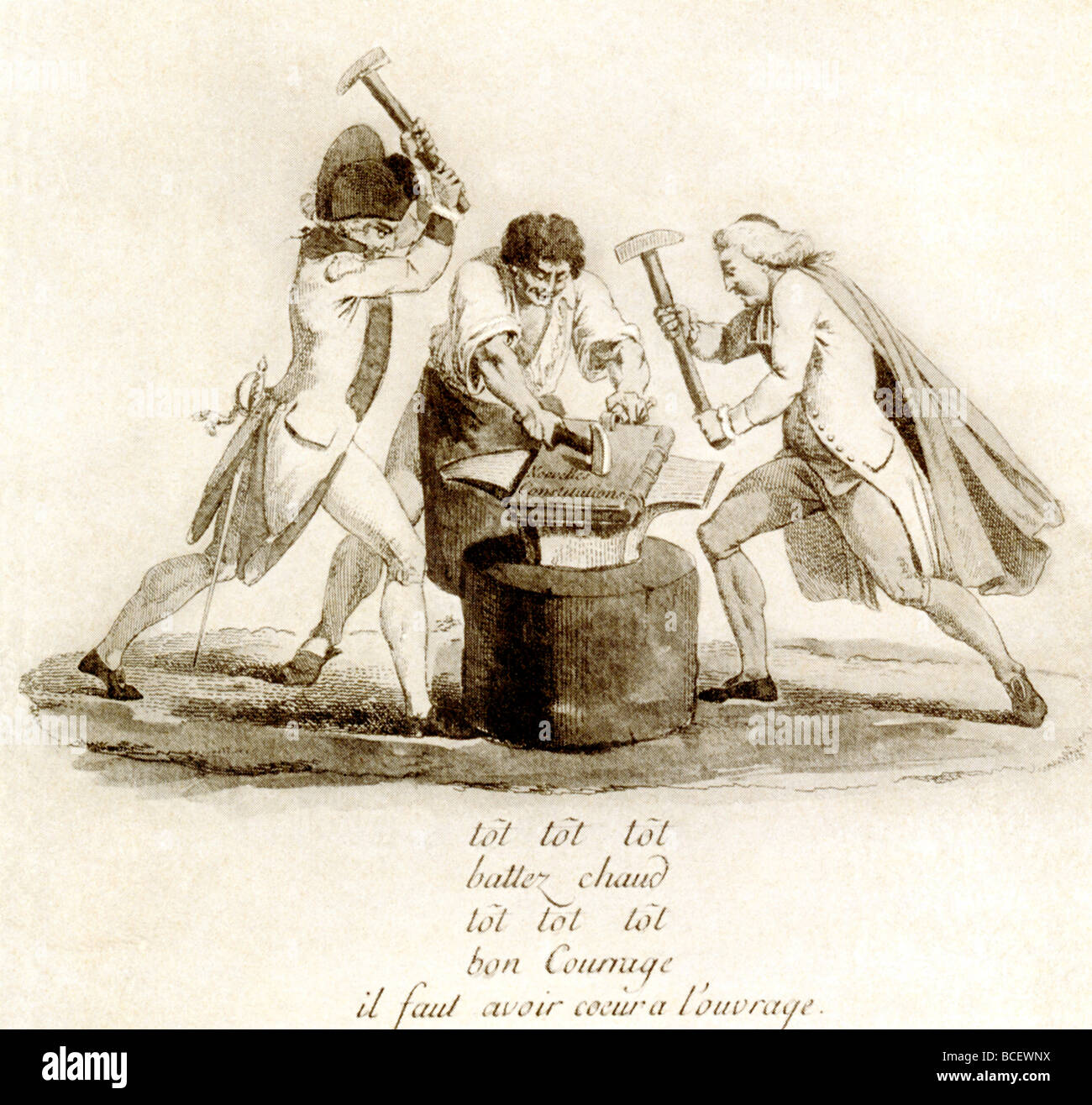 A member of each of the Three Orders in the National Assembly during the French Revolution is shown forging a New Constitution. Stock Photohttps://www.alamy.com/image-license-details/?v=1https://www.alamy.com/stock-photo-a-member-of-each-of-the-three-orders-in-the-national-assembly-during-24913782.html
A member of each of the Three Orders in the National Assembly during the French Revolution is shown forging a New Constitution. Stock Photohttps://www.alamy.com/image-license-details/?v=1https://www.alamy.com/stock-photo-a-member-of-each-of-the-three-orders-in-the-national-assembly-during-24913782.htmlRFBCEWNX–A member of each of the Three Orders in the National Assembly during the French Revolution is shown forging a New Constitution.
 Corentin Le Floch (1754-1794). French politician. Deputy of the Estates General and then of the Constituent Assembly between 1789 and 1791 for the seneschalty of Hennebont, representing the rural world. Portrait. Engraving by Pannemaker. 'History of the French Revolution'. Volume I, 1876. Stock Photohttps://www.alamy.com/image-license-details/?v=1https://www.alamy.com/corentin-le-floch-1754-1794-french-politician-deputy-of-the-estates-general-and-then-of-the-constituent-assembly-between-1789-and-1791-for-the-seneschalty-of-hennebont-representing-the-rural-world-portrait-engraving-by-pannemaker-history-of-the-french-revolution-volume-i-1876-image626659734.html
Corentin Le Floch (1754-1794). French politician. Deputy of the Estates General and then of the Constituent Assembly between 1789 and 1791 for the seneschalty of Hennebont, representing the rural world. Portrait. Engraving by Pannemaker. 'History of the French Revolution'. Volume I, 1876. Stock Photohttps://www.alamy.com/image-license-details/?v=1https://www.alamy.com/corentin-le-floch-1754-1794-french-politician-deputy-of-the-estates-general-and-then-of-the-constituent-assembly-between-1789-and-1791-for-the-seneschalty-of-hennebont-representing-the-rural-world-portrait-engraving-by-pannemaker-history-of-the-french-revolution-volume-i-1876-image626659734.htmlRM2YBEPTP–Corentin Le Floch (1754-1794). French politician. Deputy of the Estates General and then of the Constituent Assembly between 1789 and 1791 for the seneschalty of Hennebont, representing the rural world. Portrait. Engraving by Pannemaker. 'History of the French Revolution'. Volume I, 1876.
 French revolution Illustration of the conflict between Church and State Stock Photohttps://www.alamy.com/image-license-details/?v=1https://www.alamy.com/french-revolution-illustration-of-the-conflict-between-church-and-state-image481871569.html
French revolution Illustration of the conflict between Church and State Stock Photohttps://www.alamy.com/image-license-details/?v=1https://www.alamy.com/french-revolution-illustration-of-the-conflict-between-church-and-state-image481871569.htmlRM2JYY42W–French revolution Illustration of the conflict between Church and State
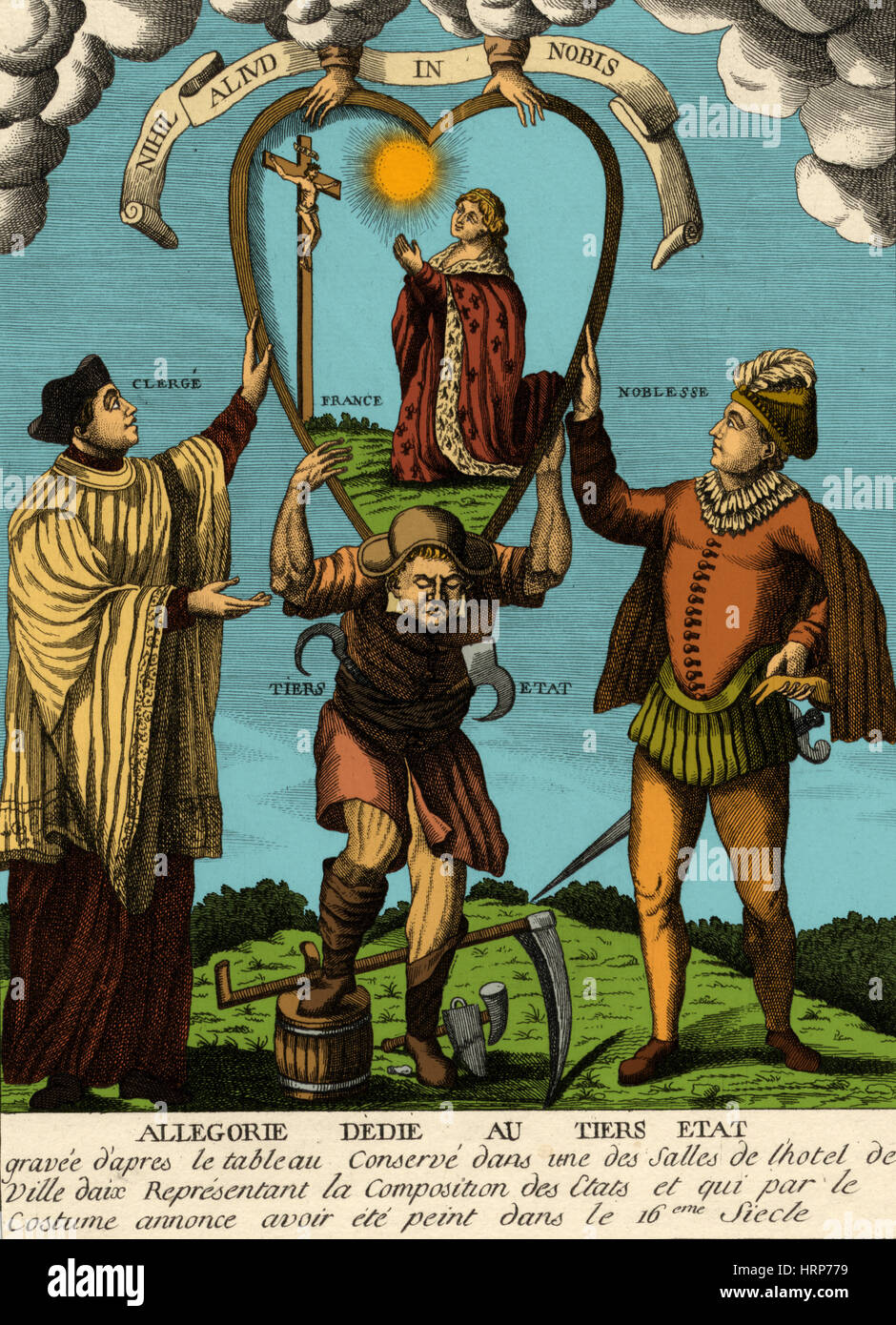 French Revolution, Estates-General of 1789 Stock Photohttps://www.alamy.com/image-license-details/?v=1https://www.alamy.com/stock-photo-french-revolution-estates-general-of-1789-135098301.html
French Revolution, Estates-General of 1789 Stock Photohttps://www.alamy.com/image-license-details/?v=1https://www.alamy.com/stock-photo-french-revolution-estates-general-of-1789-135098301.htmlRMHRP779–French Revolution, Estates-General of 1789
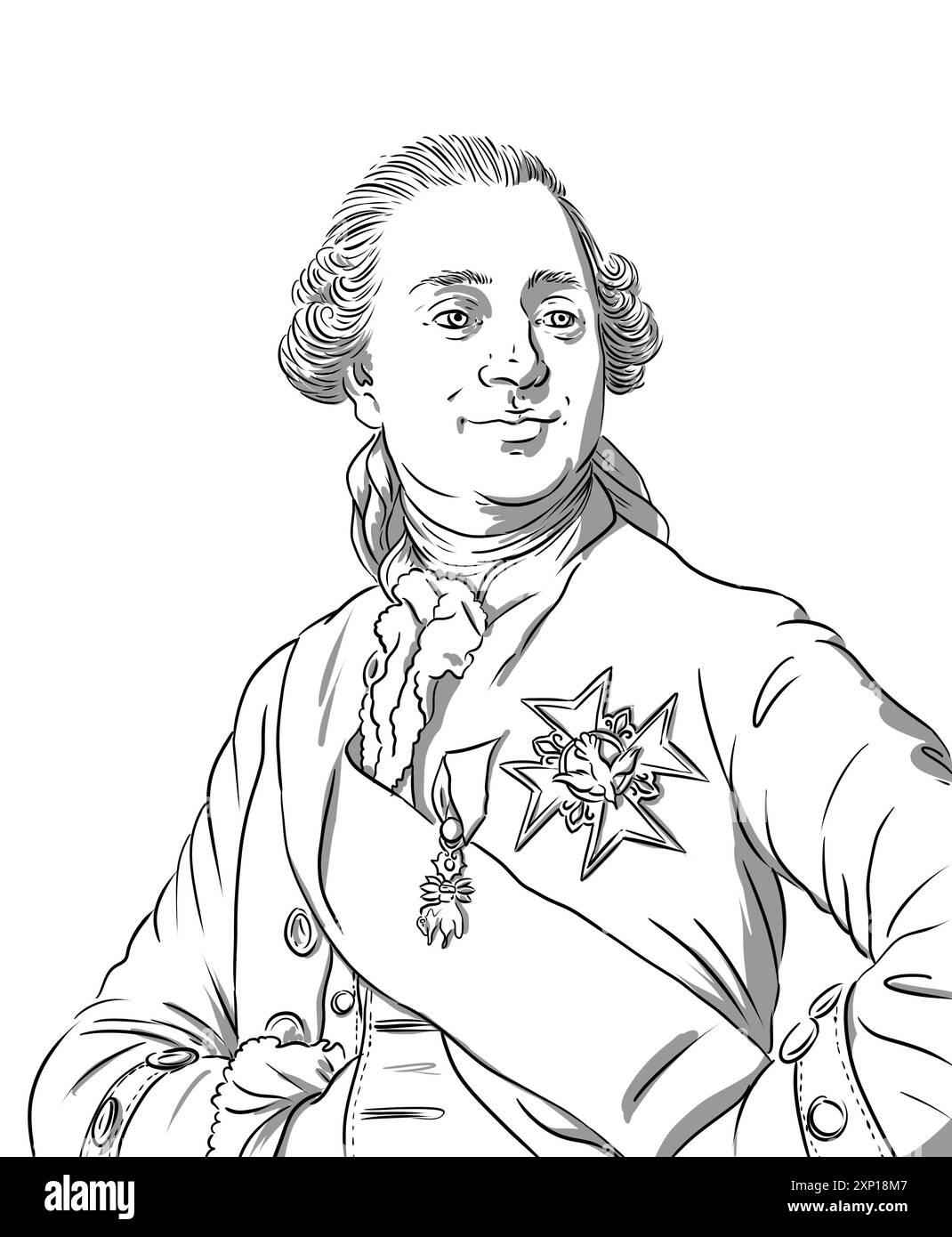 Portrait of Louis 16, Louis XVI, famous french monarch during the french revolution, and husband of Queen Marie-Antoinette Stock Photohttps://www.alamy.com/image-license-details/?v=1https://www.alamy.com/portrait-of-louis-16-louis-xvi-famous-french-monarch-during-the-french-revolution-and-husband-of-queen-marie-antoinette-image615914103.html
Portrait of Louis 16, Louis XVI, famous french monarch during the french revolution, and husband of Queen Marie-Antoinette Stock Photohttps://www.alamy.com/image-license-details/?v=1https://www.alamy.com/portrait-of-louis-16-louis-xvi-famous-french-monarch-during-the-french-revolution-and-husband-of-queen-marie-antoinette-image615914103.htmlRM2XP18M7–Portrait of Louis 16, Louis XVI, famous french monarch during the french revolution, and husband of Queen Marie-Antoinette
![. Maple leaves, 1894 [microform] : Canadian history, literature, ornithology. Birds; Authors, Canadian; Oiseaux; Ecrivains canadiens. f! â Mi':-" r I. â Ml â 32G â ii"es Kinf's ami Commoners have had to learn; evevv where breaks forth the inexorable logic taught by the violation of the eternal laws of moral rectitude and civic duty. 1749.. ;t!f 1 Let ns then view Quebec such as a celebrated tourist found it in 1749 ; ten years later we will witness the falling asunder of a stately, l)ut insecure edifice, the French domination in North America. On the "jth August, 1749, a disting Stock Photo . Maple leaves, 1894 [microform] : Canadian history, literature, ornithology. Birds; Authors, Canadian; Oiseaux; Ecrivains canadiens. f! â Mi':-" r I. â Ml â 32G â ii"es Kinf's ami Commoners have had to learn; evevv where breaks forth the inexorable logic taught by the violation of the eternal laws of moral rectitude and civic duty. 1749.. ;t!f 1 Let ns then view Quebec such as a celebrated tourist found it in 1749 ; ten years later we will witness the falling asunder of a stately, l)ut insecure edifice, the French domination in North America. On the "jth August, 1749, a disting Stock Photo](https://c8.alamy.com/comp/RJ5KAR/maple-leaves-1894-microform-canadian-history-literature-ornithology-birds-authors-canadian-oiseaux-ecrivains-canadiens-f!-mi-quot-r-i-ml-32g-iiquotes-kinfs-ami-commoners-have-had-to-learn-evevv-where-breaks-forth-the-inexorable-logic-taught-by-the-violation-of-the-eternal-laws-of-moral-rectitude-and-civic-duty-1749-t!f-1-let-ns-then-view-quebec-such-as-a-celebrated-tourist-found-it-in-1749-ten-years-later-we-will-witness-the-falling-asunder-of-a-stately-lut-insecure-edifice-the-french-domination-in-north-america-on-the-quotjth-august-1749-a-disting-RJ5KAR.jpg) . Maple leaves, 1894 [microform] : Canadian history, literature, ornithology. Birds; Authors, Canadian; Oiseaux; Ecrivains canadiens. f! â Mi':-" r I. â Ml â 32G â ii"es Kinf's ami Commoners have had to learn; evevv where breaks forth the inexorable logic taught by the violation of the eternal laws of moral rectitude and civic duty. 1749.. ;t!f 1 Let ns then view Quebec such as a celebrated tourist found it in 1749 ; ten years later we will witness the falling asunder of a stately, l)ut insecure edifice, the French domination in North America. On the "jth August, 1749, a disting Stock Photohttps://www.alamy.com/image-license-details/?v=1https://www.alamy.com/maple-leaves-1894-microform-canadian-history-literature-ornithology-birds-authors-canadian-oiseaux-ecrivains-canadiens-f!-mi-quot-r-i-ml-32g-iiquotes-kinfs-ami-commoners-have-had-to-learn-evevv-where-breaks-forth-the-inexorable-logic-taught-by-the-violation-of-the-eternal-laws-of-moral-rectitude-and-civic-duty-1749-t!f-1-let-ns-then-view-quebec-such-as-a-celebrated-tourist-found-it-in-1749-ten-years-later-we-will-witness-the-falling-asunder-of-a-stately-lut-insecure-edifice-the-french-domination-in-north-america-on-the-quotjth-august-1749-a-disting-image234923551.html
. Maple leaves, 1894 [microform] : Canadian history, literature, ornithology. Birds; Authors, Canadian; Oiseaux; Ecrivains canadiens. f! â Mi':-" r I. â Ml â 32G â ii"es Kinf's ami Commoners have had to learn; evevv where breaks forth the inexorable logic taught by the violation of the eternal laws of moral rectitude and civic duty. 1749.. ;t!f 1 Let ns then view Quebec such as a celebrated tourist found it in 1749 ; ten years later we will witness the falling asunder of a stately, l)ut insecure edifice, the French domination in North America. On the "jth August, 1749, a disting Stock Photohttps://www.alamy.com/image-license-details/?v=1https://www.alamy.com/maple-leaves-1894-microform-canadian-history-literature-ornithology-birds-authors-canadian-oiseaux-ecrivains-canadiens-f!-mi-quot-r-i-ml-32g-iiquotes-kinfs-ami-commoners-have-had-to-learn-evevv-where-breaks-forth-the-inexorable-logic-taught-by-the-violation-of-the-eternal-laws-of-moral-rectitude-and-civic-duty-1749-t!f-1-let-ns-then-view-quebec-such-as-a-celebrated-tourist-found-it-in-1749-ten-years-later-we-will-witness-the-falling-asunder-of-a-stately-lut-insecure-edifice-the-french-domination-in-north-america-on-the-quotjth-august-1749-a-disting-image234923551.htmlRMRJ5KAR–. Maple leaves, 1894 [microform] : Canadian history, literature, ornithology. Birds; Authors, Canadian; Oiseaux; Ecrivains canadiens. f! â Mi':-" r I. â Ml â 32G â ii"es Kinf's ami Commoners have had to learn; evevv where breaks forth the inexorable logic taught by the violation of the eternal laws of moral rectitude and civic duty. 1749.. ;t!f 1 Let ns then view Quebec such as a celebrated tourist found it in 1749 ; ten years later we will witness the falling asunder of a stately, l)ut insecure edifice, the French domination in North America. On the "jth August, 1749, a disting
 Image from The French Revolution of 1789 illustrating the 'triple Accord' (meeting) between the three old orders. In the background, the hunter symbolizes the suppression of the right to hunt. Stock Photohttps://www.alamy.com/image-license-details/?v=1https://www.alamy.com/image-from-the-french-revolution-of-1789-illustrating-the-triple-accord-meeting-between-the-three-old-orders-in-the-background-the-hunter-symbolizes-the-suppression-of-the-right-to-hunt-image481871942.html
Image from The French Revolution of 1789 illustrating the 'triple Accord' (meeting) between the three old orders. In the background, the hunter symbolizes the suppression of the right to hunt. Stock Photohttps://www.alamy.com/image-license-details/?v=1https://www.alamy.com/image-from-the-french-revolution-of-1789-illustrating-the-triple-accord-meeting-between-the-three-old-orders-in-the-background-the-hunter-symbolizes-the-suppression-of-the-right-to-hunt-image481871942.htmlRM2JYY4G6–Image from The French Revolution of 1789 illustrating the 'triple Accord' (meeting) between the three old orders. In the background, the hunter symbolizes the suppression of the right to hunt.
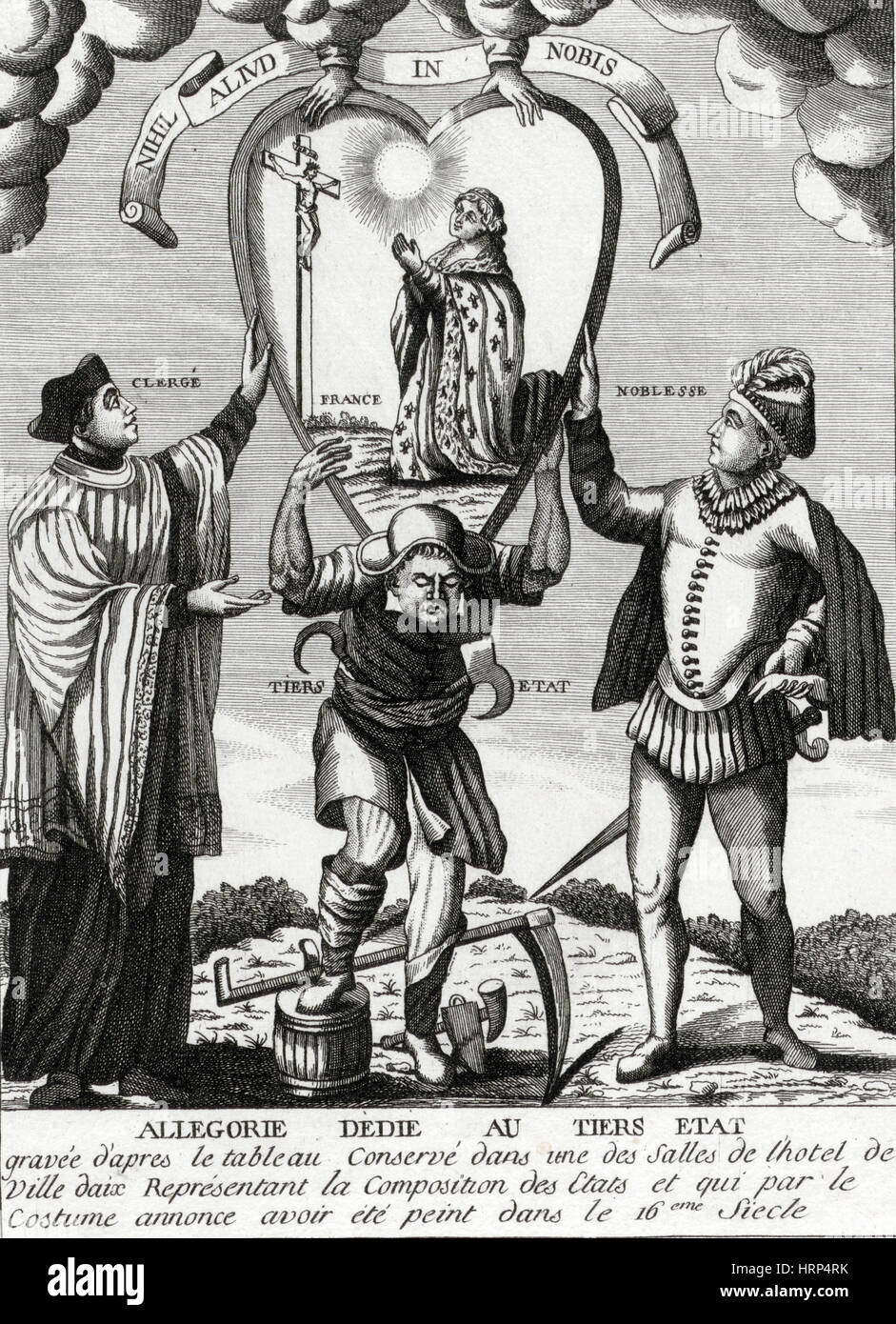 French Revolution, Estates-General of 1789 Stock Photohttps://www.alamy.com/image-license-details/?v=1https://www.alamy.com/stock-photo-french-revolution-estates-general-of-1789-135096407.html
French Revolution, Estates-General of 1789 Stock Photohttps://www.alamy.com/image-license-details/?v=1https://www.alamy.com/stock-photo-french-revolution-estates-general-of-1789-135096407.htmlRMHRP4RK–French Revolution, Estates-General of 1789
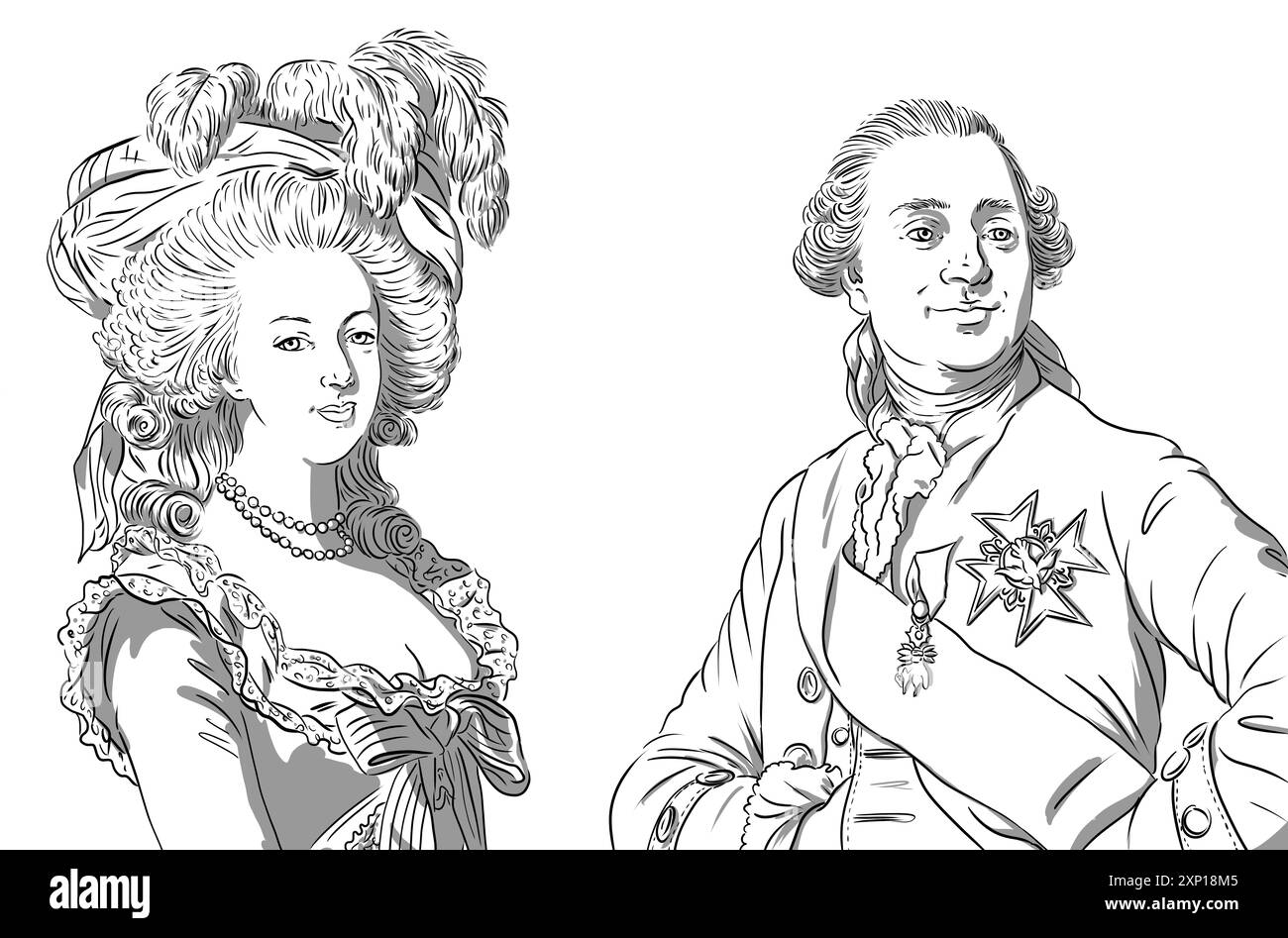 Portraits of Louis XVI and Marie Antoinette of Austria, Louis 16 and Marie-Antoinette of Austria, king and queen of France in the french revolution Stock Photohttps://www.alamy.com/image-license-details/?v=1https://www.alamy.com/portraits-of-louis-xvi-and-marie-antoinette-of-austria-louis-16-and-marie-antoinette-of-austria-king-and-queen-of-france-in-the-french-revolution-image615914101.html
Portraits of Louis XVI and Marie Antoinette of Austria, Louis 16 and Marie-Antoinette of Austria, king and queen of France in the french revolution Stock Photohttps://www.alamy.com/image-license-details/?v=1https://www.alamy.com/portraits-of-louis-xvi-and-marie-antoinette-of-austria-louis-16-and-marie-antoinette-of-austria-king-and-queen-of-france-in-the-french-revolution-image615914101.htmlRM2XP18M5–Portraits of Louis XVI and Marie Antoinette of Austria, Louis 16 and Marie-Antoinette of Austria, king and queen of France in the french revolution
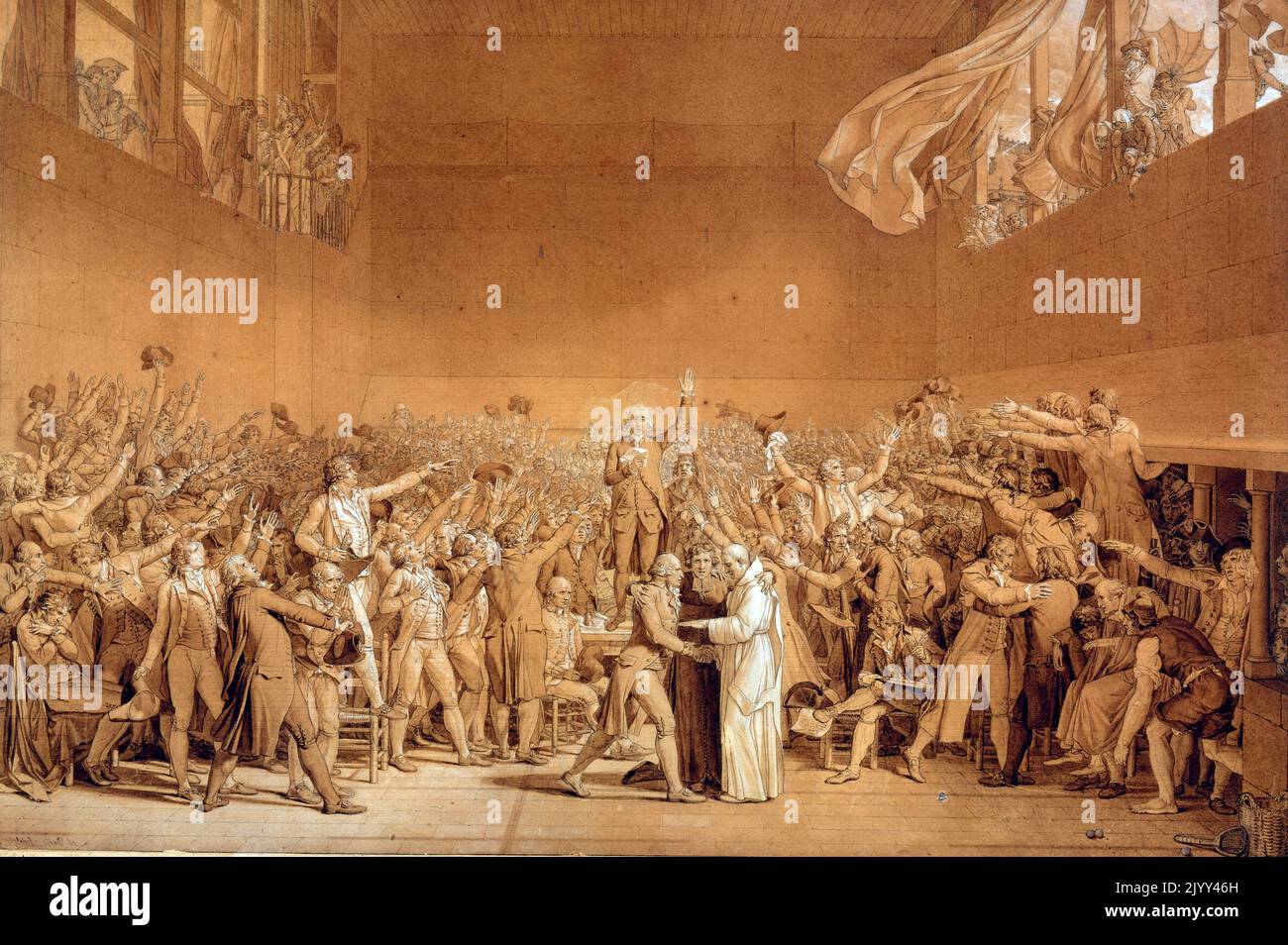 Inaugural meeting of the Estates General, 5th May 1789. Painting by Louis-Charles-Auguste Couder (1789 - 1873). The estates general was a general assembly representing the French estates of the realm: the clergy (First Estate), the nobility (Second Estate), and the commoners (Third Estate). Summoned by King Louis XVI, it was brought to an end when the Third Estate formed into a National Assembly, inviting the other two to join, against the wishes of the King. This signals the outbreak of the French Revolution. Stock Photohttps://www.alamy.com/image-license-details/?v=1https://www.alamy.com/inaugural-meeting-of-the-estates-general-5th-may-1789-painting-by-louis-charles-auguste-couder-1789-1873-the-estates-general-was-a-general-assembly-representing-the-french-estates-of-the-realm-the-clergy-first-estate-the-nobility-second-estate-and-the-commoners-third-estate-summoned-by-king-louis-xvi-it-was-brought-to-an-end-when-the-third-estate-formed-into-a-national-assembly-inviting-the-other-two-to-join-against-the-wishes-of-the-king-this-signals-the-outbreak-of-the-french-revolution-image481871673.html
Inaugural meeting of the Estates General, 5th May 1789. Painting by Louis-Charles-Auguste Couder (1789 - 1873). The estates general was a general assembly representing the French estates of the realm: the clergy (First Estate), the nobility (Second Estate), and the commoners (Third Estate). Summoned by King Louis XVI, it was brought to an end when the Third Estate formed into a National Assembly, inviting the other two to join, against the wishes of the King. This signals the outbreak of the French Revolution. Stock Photohttps://www.alamy.com/image-license-details/?v=1https://www.alamy.com/inaugural-meeting-of-the-estates-general-5th-may-1789-painting-by-louis-charles-auguste-couder-1789-1873-the-estates-general-was-a-general-assembly-representing-the-french-estates-of-the-realm-the-clergy-first-estate-the-nobility-second-estate-and-the-commoners-third-estate-summoned-by-king-louis-xvi-it-was-brought-to-an-end-when-the-third-estate-formed-into-a-national-assembly-inviting-the-other-two-to-join-against-the-wishes-of-the-king-this-signals-the-outbreak-of-the-french-revolution-image481871673.htmlRM2JYY46H–Inaugural meeting of the Estates General, 5th May 1789. Painting by Louis-Charles-Auguste Couder (1789 - 1873). The estates general was a general assembly representing the French estates of the realm: the clergy (First Estate), the nobility (Second Estate), and the commoners (Third Estate). Summoned by King Louis XVI, it was brought to an end when the Third Estate formed into a National Assembly, inviting the other two to join, against the wishes of the King. This signals the outbreak of the French Revolution.
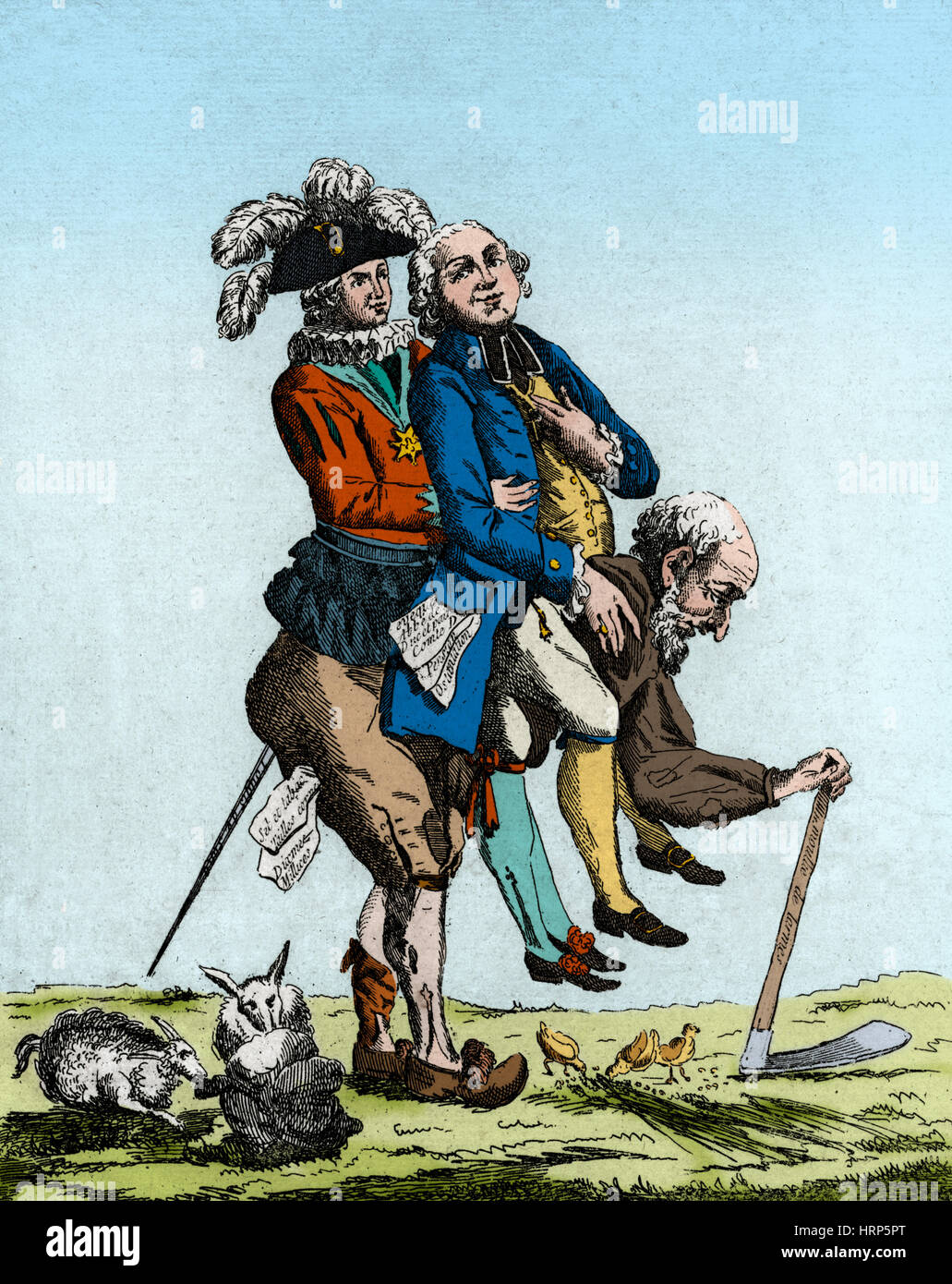 French Revolution, Estates-General of 1789 Stock Photohttps://www.alamy.com/image-license-details/?v=1https://www.alamy.com/stock-photo-french-revolution-estates-general-of-1789-135097168.html
French Revolution, Estates-General of 1789 Stock Photohttps://www.alamy.com/image-license-details/?v=1https://www.alamy.com/stock-photo-french-revolution-estates-general-of-1789-135097168.htmlRMHRP5PT–French Revolution, Estates-General of 1789
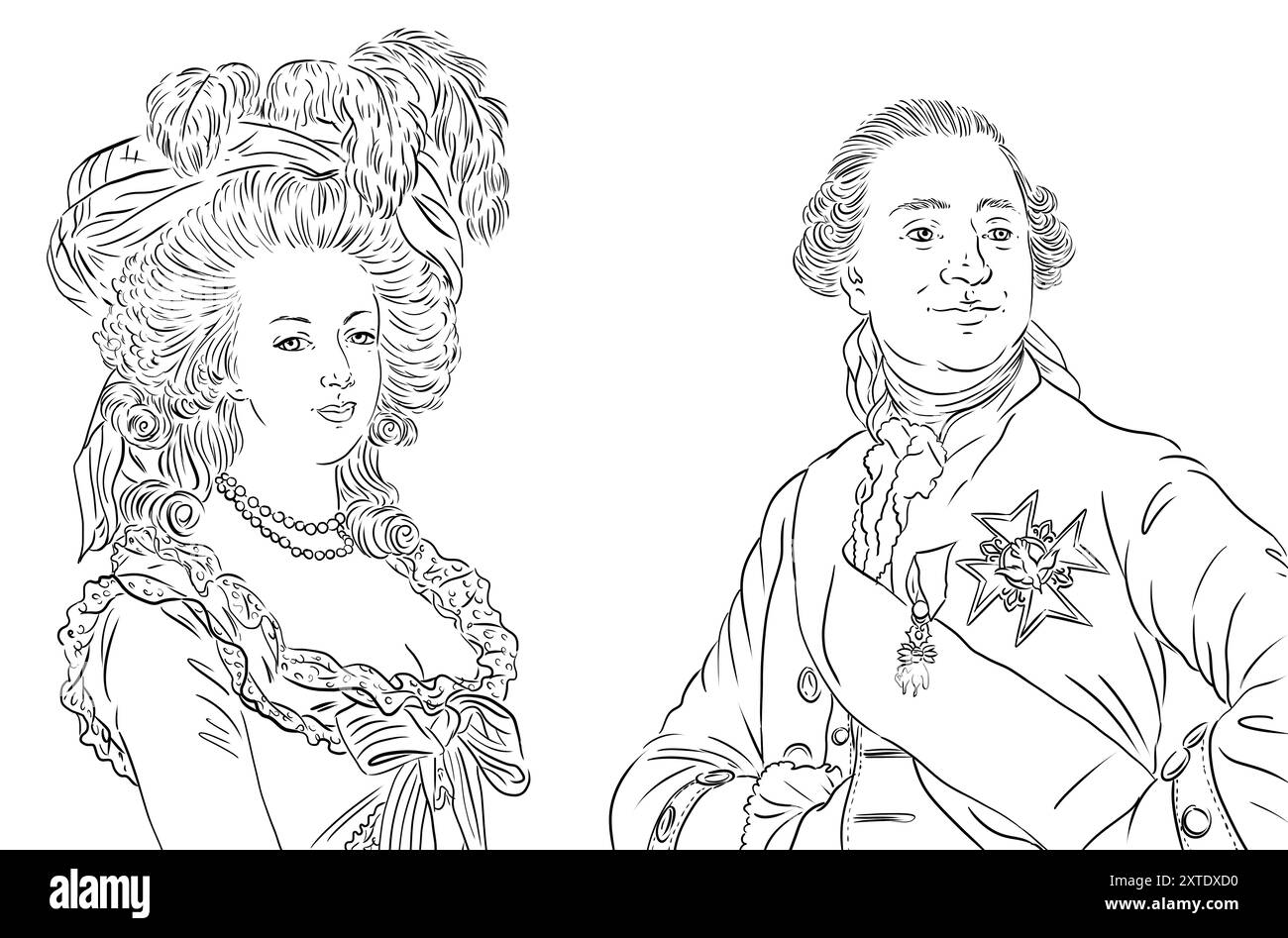 Portraits of Louis XVI and Marie Antoinette of Austria, Louis 16 and Marie-Antoinette of Austria, king and queen of France in the french revolution Stock Photohttps://www.alamy.com/image-license-details/?v=1https://www.alamy.com/portraits-of-louis-xvi-and-marie-antoinette-of-austria-louis-16-and-marie-antoinette-of-austria-king-and-queen-of-france-in-the-french-revolution-image617420748.html
Portraits of Louis XVI and Marie Antoinette of Austria, Louis 16 and Marie-Antoinette of Austria, king and queen of France in the french revolution Stock Photohttps://www.alamy.com/image-license-details/?v=1https://www.alamy.com/portraits-of-louis-xvi-and-marie-antoinette-of-austria-louis-16-and-marie-antoinette-of-austria-king-and-queen-of-france-in-the-french-revolution-image617420748.htmlRM2XTDXD0–Portraits of Louis XVI and Marie Antoinette of Austria, Louis 16 and Marie-Antoinette of Austria, king and queen of France in the french revolution
 Portrait of Marat man of the french revolution Stock Photohttps://www.alamy.com/image-license-details/?v=1https://www.alamy.com/portrait-of-marat-man-of-the-french-revolution-image615914110.html
Portrait of Marat man of the french revolution Stock Photohttps://www.alamy.com/image-license-details/?v=1https://www.alamy.com/portrait-of-marat-man-of-the-french-revolution-image615914110.htmlRM2XP18ME–Portrait of Marat man of the french revolution
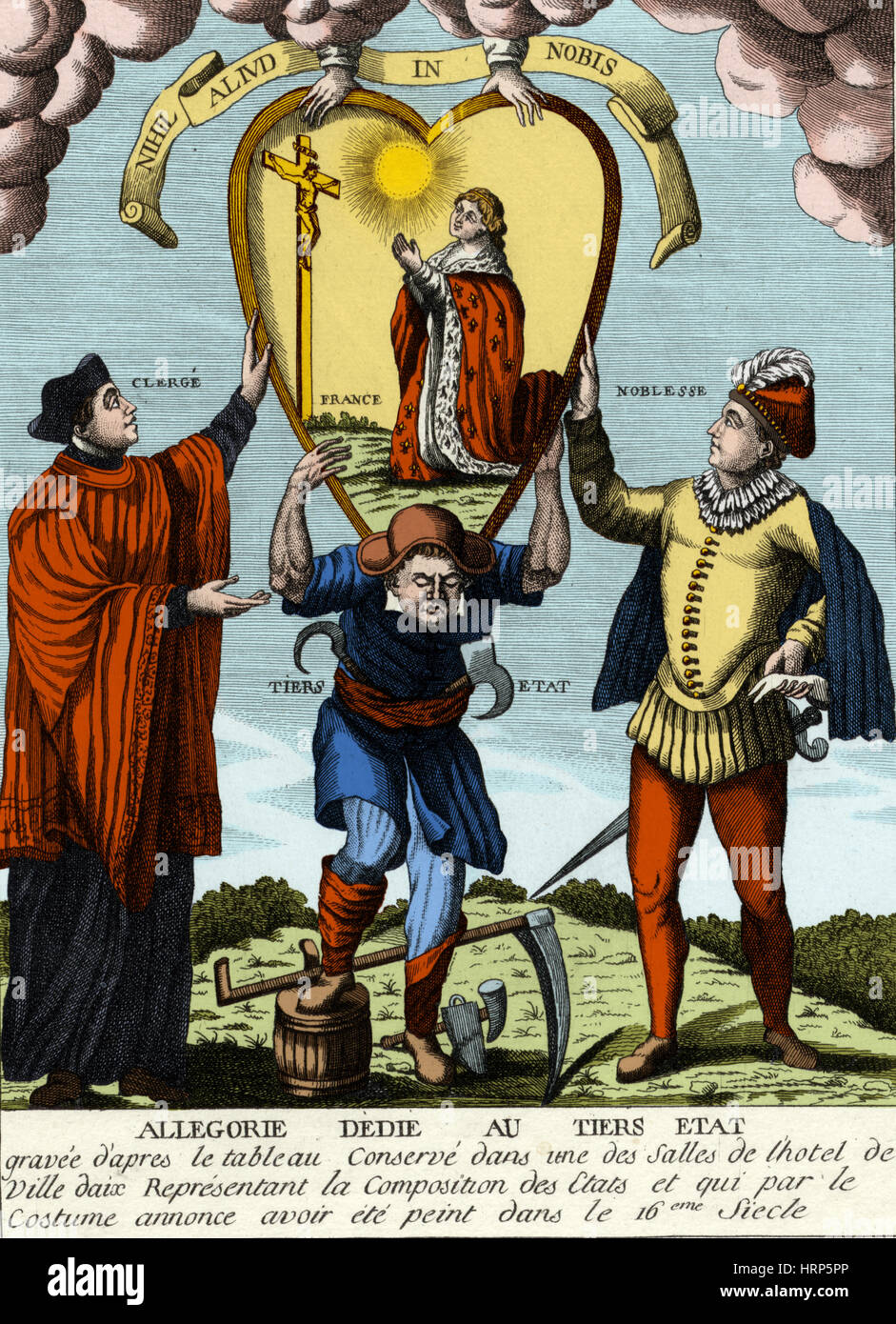 French Revolution, Estates-General of 1789 Stock Photohttps://www.alamy.com/image-license-details/?v=1https://www.alamy.com/stock-photo-french-revolution-estates-general-of-1789-135097166.html
French Revolution, Estates-General of 1789 Stock Photohttps://www.alamy.com/image-license-details/?v=1https://www.alamy.com/stock-photo-french-revolution-estates-general-of-1789-135097166.htmlRMHRP5PP–French Revolution, Estates-General of 1789
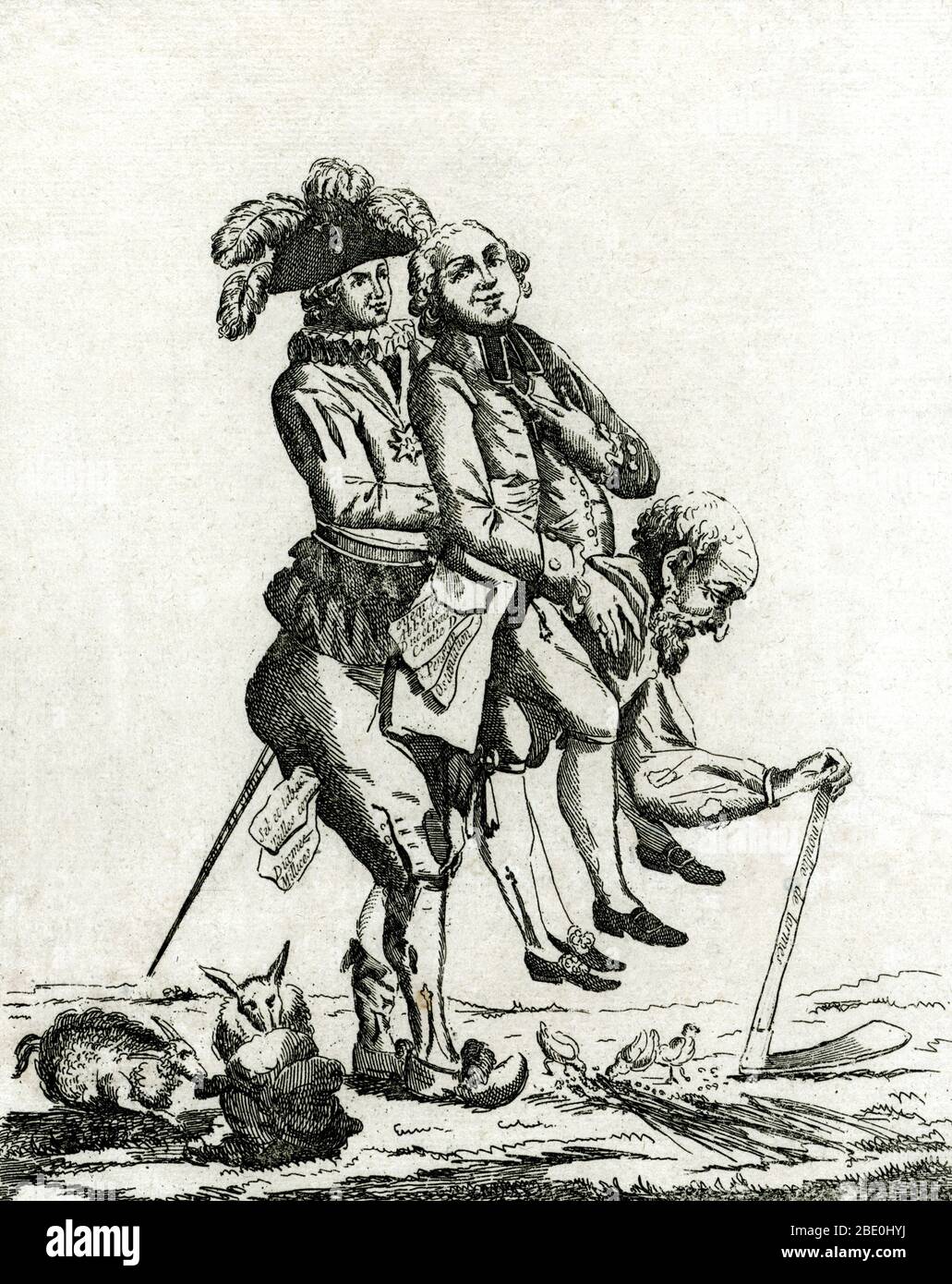 Entitled: 'A faut esperer q'eu se jeu la finira bentot.' Shows the nobility and the clergy, representing the estates general, riding on the back of a man representing the working class, or third estate; the man is bent under their weight and supports himself by leaning on an adz-like tool, while around his feet birds and rabbits feast on the produce of his labor. The Estates-General of 1789 was the first meeting since 1614 of the French Estates-General, a general assembly representing the French estates of the realm: the clergy (First Estate), the nobles (Second Estate), and the common people Stock Photohttps://www.alamy.com/image-license-details/?v=1https://www.alamy.com/entitled-a-faut-esperer-qeu-se-jeu-la-finira-bentot-shows-the-nobility-and-the-clergy-representing-the-estates-general-riding-on-the-back-of-a-man-representing-the-working-class-or-third-estate-the-man-is-bent-under-their-weight-and-supports-himself-by-leaning-on-an-adz-like-tool-while-around-his-feet-birds-and-rabbits-feast-on-the-produce-of-his-labor-the-estates-general-of-1789-was-the-first-meeting-since-1614-of-the-french-estates-general-a-general-assembly-representing-the-french-estates-of-the-realm-the-clergy-first-estate-the-nobles-second-estate-and-the-common-people-image352826646.html
Entitled: 'A faut esperer q'eu se jeu la finira bentot.' Shows the nobility and the clergy, representing the estates general, riding on the back of a man representing the working class, or third estate; the man is bent under their weight and supports himself by leaning on an adz-like tool, while around his feet birds and rabbits feast on the produce of his labor. The Estates-General of 1789 was the first meeting since 1614 of the French Estates-General, a general assembly representing the French estates of the realm: the clergy (First Estate), the nobles (Second Estate), and the common people Stock Photohttps://www.alamy.com/image-license-details/?v=1https://www.alamy.com/entitled-a-faut-esperer-qeu-se-jeu-la-finira-bentot-shows-the-nobility-and-the-clergy-representing-the-estates-general-riding-on-the-back-of-a-man-representing-the-working-class-or-third-estate-the-man-is-bent-under-their-weight-and-supports-himself-by-leaning-on-an-adz-like-tool-while-around-his-feet-birds-and-rabbits-feast-on-the-produce-of-his-labor-the-estates-general-of-1789-was-the-first-meeting-since-1614-of-the-french-estates-general-a-general-assembly-representing-the-french-estates-of-the-realm-the-clergy-first-estate-the-nobles-second-estate-and-the-common-people-image352826646.htmlRM2BE0HYJ–Entitled: 'A faut esperer q'eu se jeu la finira bentot.' Shows the nobility and the clergy, representing the estates general, riding on the back of a man representing the working class, or third estate; the man is bent under their weight and supports himself by leaning on an adz-like tool, while around his feet birds and rabbits feast on the produce of his labor. The Estates-General of 1789 was the first meeting since 1614 of the French Estates-General, a general assembly representing the French estates of the realm: the clergy (First Estate), the nobles (Second Estate), and the common people
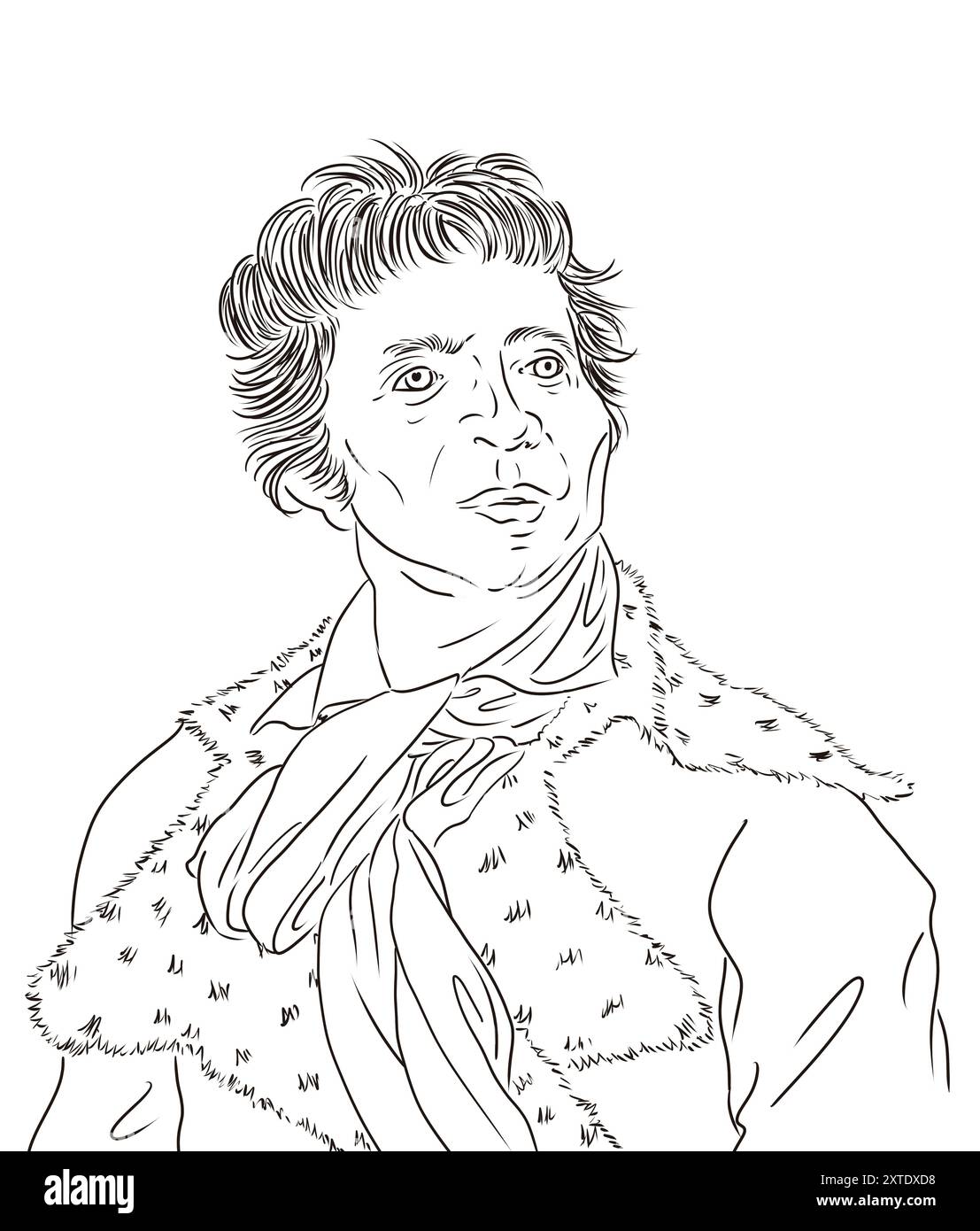 Portrait of Marat man of the french revolution Stock Photohttps://www.alamy.com/image-license-details/?v=1https://www.alamy.com/portrait-of-marat-man-of-the-french-revolution-image617420756.html
Portrait of Marat man of the french revolution Stock Photohttps://www.alamy.com/image-license-details/?v=1https://www.alamy.com/portrait-of-marat-man-of-the-french-revolution-image617420756.htmlRM2XTDXD8–Portrait of Marat man of the french revolution
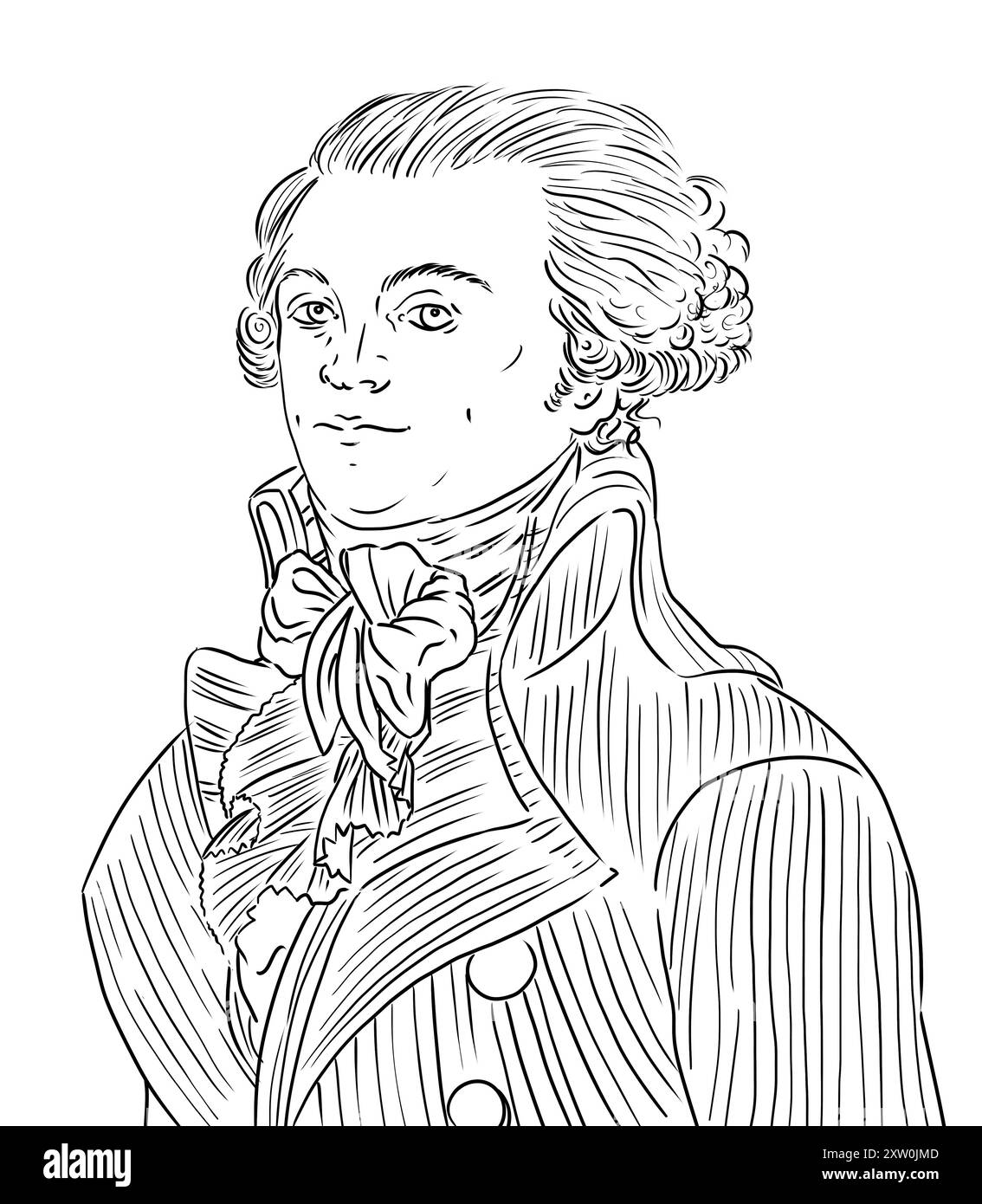 Portrait of Robespierre, famous french revolutionary man Stock Photohttps://www.alamy.com/image-license-details/?v=1https://www.alamy.com/portrait-of-robespierre-famous-french-revolutionary-man-image617743965.html
Portrait of Robespierre, famous french revolutionary man Stock Photohttps://www.alamy.com/image-license-details/?v=1https://www.alamy.com/portrait-of-robespierre-famous-french-revolutionary-man-image617743965.htmlRM2XW0JMD–Portrait of Robespierre, famous french revolutionary man
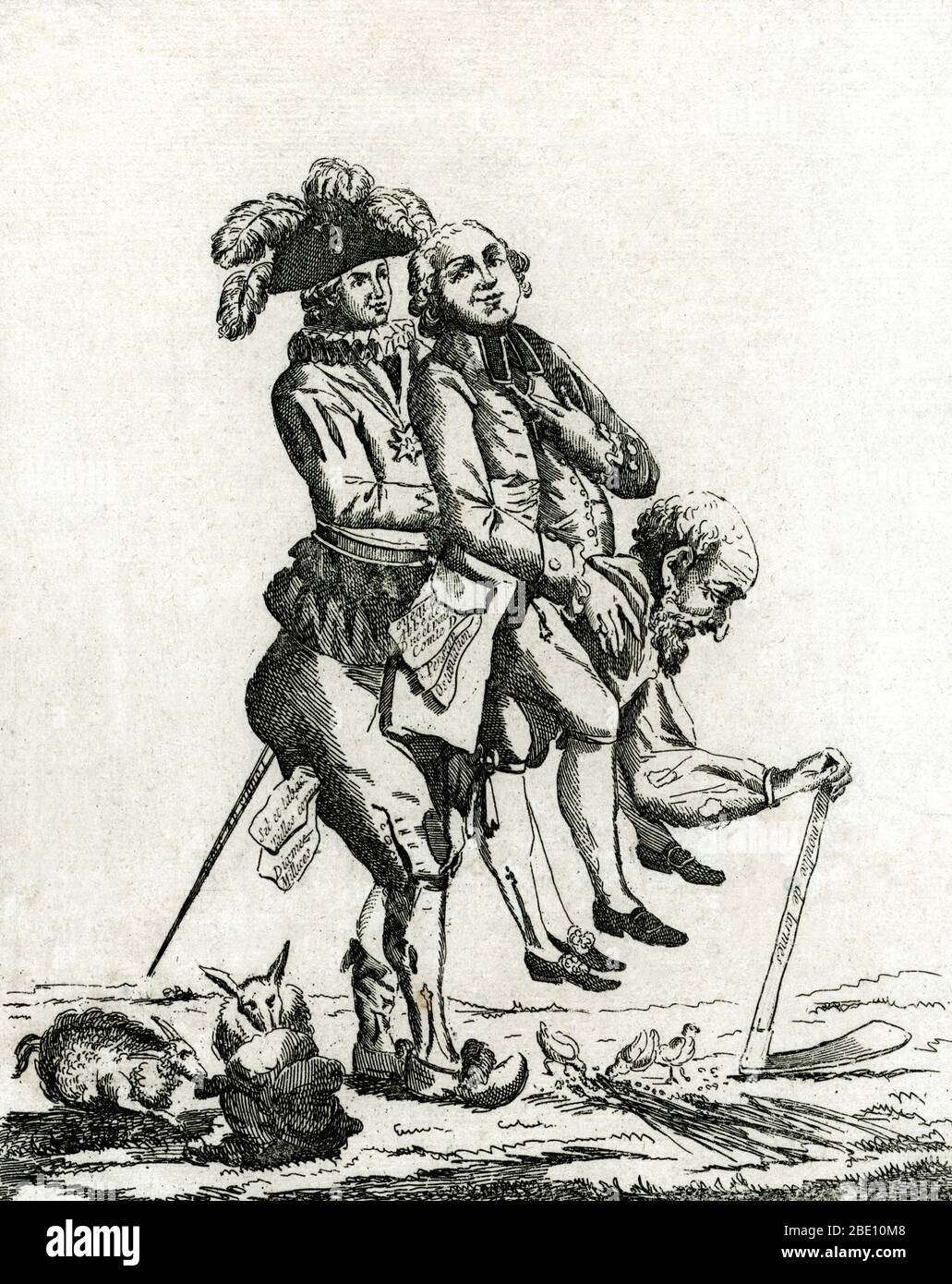 Entitled: 'A faut esperer q'eu se jeu la finira bentot.' Shows the nobility and the clergy, representing the estates general, riding on the back of a man representing the working class, or third estate; the man is bent under their weight and supports himself by leaning on an adz-like tool, while around his feet birds and rabbits feast on the produce of his labor. The Estates-General of 1789 was the first meeting since 1614 of the French Estates-General, a general assembly representing the French estates of the realm: the clergy (First Estate), the nobles (Second Estate), and the common people Stock Photohttps://www.alamy.com/image-license-details/?v=1https://www.alamy.com/entitled-a-faut-esperer-qeu-se-jeu-la-finira-bentot-shows-the-nobility-and-the-clergy-representing-the-estates-general-riding-on-the-back-of-a-man-representing-the-working-class-or-third-estate-the-man-is-bent-under-their-weight-and-supports-himself-by-leaning-on-an-adz-like-tool-while-around-his-feet-birds-and-rabbits-feast-on-the-produce-of-his-labor-the-estates-general-of-1789-was-the-first-meeting-since-1614-of-the-french-estates-general-a-general-assembly-representing-the-french-estates-of-the-realm-the-clergy-first-estate-the-nobles-second-estate-and-the-common-people-image352835064.html
Entitled: 'A faut esperer q'eu se jeu la finira bentot.' Shows the nobility and the clergy, representing the estates general, riding on the back of a man representing the working class, or third estate; the man is bent under their weight and supports himself by leaning on an adz-like tool, while around his feet birds and rabbits feast on the produce of his labor. The Estates-General of 1789 was the first meeting since 1614 of the French Estates-General, a general assembly representing the French estates of the realm: the clergy (First Estate), the nobles (Second Estate), and the common people Stock Photohttps://www.alamy.com/image-license-details/?v=1https://www.alamy.com/entitled-a-faut-esperer-qeu-se-jeu-la-finira-bentot-shows-the-nobility-and-the-clergy-representing-the-estates-general-riding-on-the-back-of-a-man-representing-the-working-class-or-third-estate-the-man-is-bent-under-their-weight-and-supports-himself-by-leaning-on-an-adz-like-tool-while-around-his-feet-birds-and-rabbits-feast-on-the-produce-of-his-labor-the-estates-general-of-1789-was-the-first-meeting-since-1614-of-the-french-estates-general-a-general-assembly-representing-the-french-estates-of-the-realm-the-clergy-first-estate-the-nobles-second-estate-and-the-common-people-image352835064.htmlRM2BE10M8–Entitled: 'A faut esperer q'eu se jeu la finira bentot.' Shows the nobility and the clergy, representing the estates general, riding on the back of a man representing the working class, or third estate; the man is bent under their weight and supports himself by leaning on an adz-like tool, while around his feet birds and rabbits feast on the produce of his labor. The Estates-General of 1789 was the first meeting since 1614 of the French Estates-General, a general assembly representing the French estates of the realm: the clergy (First Estate), the nobles (Second Estate), and the common people
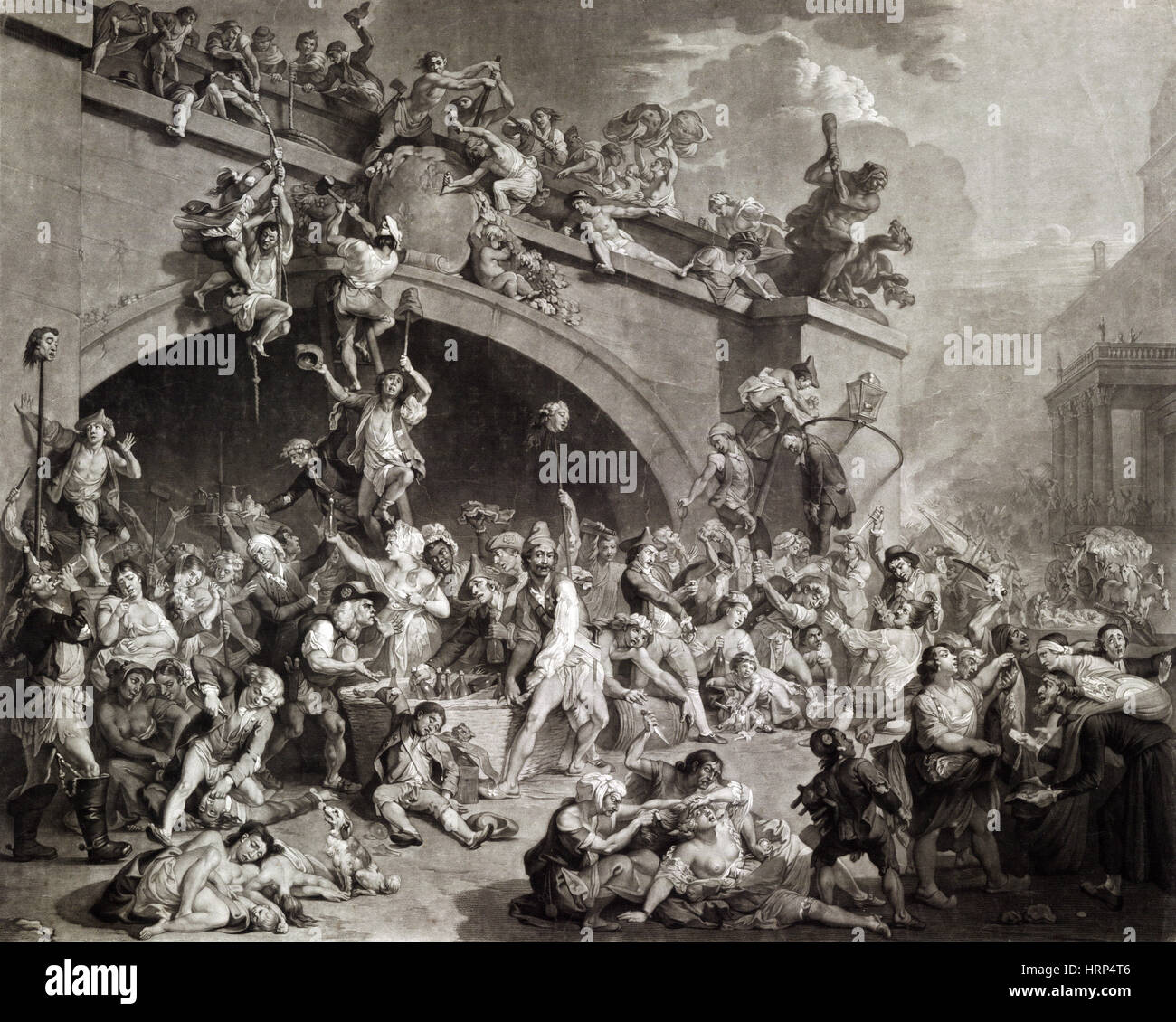 Storming the Tuileries Palace, 1792 Stock Photohttps://www.alamy.com/image-license-details/?v=1https://www.alamy.com/stock-photo-storming-the-tuileries-palace-1792-135096422.html
Storming the Tuileries Palace, 1792 Stock Photohttps://www.alamy.com/image-license-details/?v=1https://www.alamy.com/stock-photo-storming-the-tuileries-palace-1792-135096422.htmlRMHRP4T6–Storming the Tuileries Palace, 1792
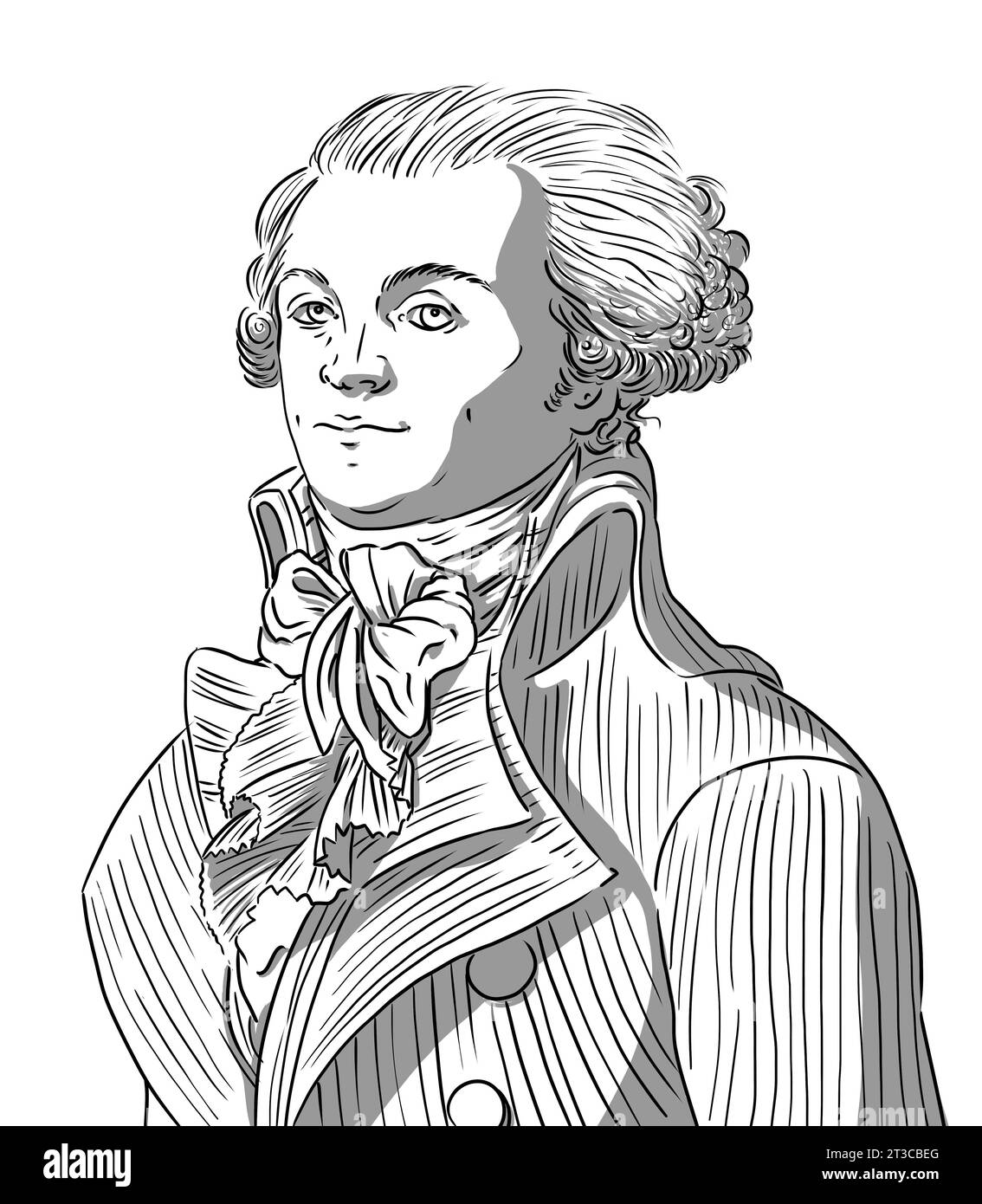 Portrait of Robespierre, famous french revolutionary man Stock Photohttps://www.alamy.com/image-license-details/?v=1https://www.alamy.com/portrait-of-robespierre-famous-french-revolutionary-man-image570058568.html
Portrait of Robespierre, famous french revolutionary man Stock Photohttps://www.alamy.com/image-license-details/?v=1https://www.alamy.com/portrait-of-robespierre-famous-french-revolutionary-man-image570058568.htmlRM2T3CBEG–Portrait of Robespierre, famous french revolutionary man
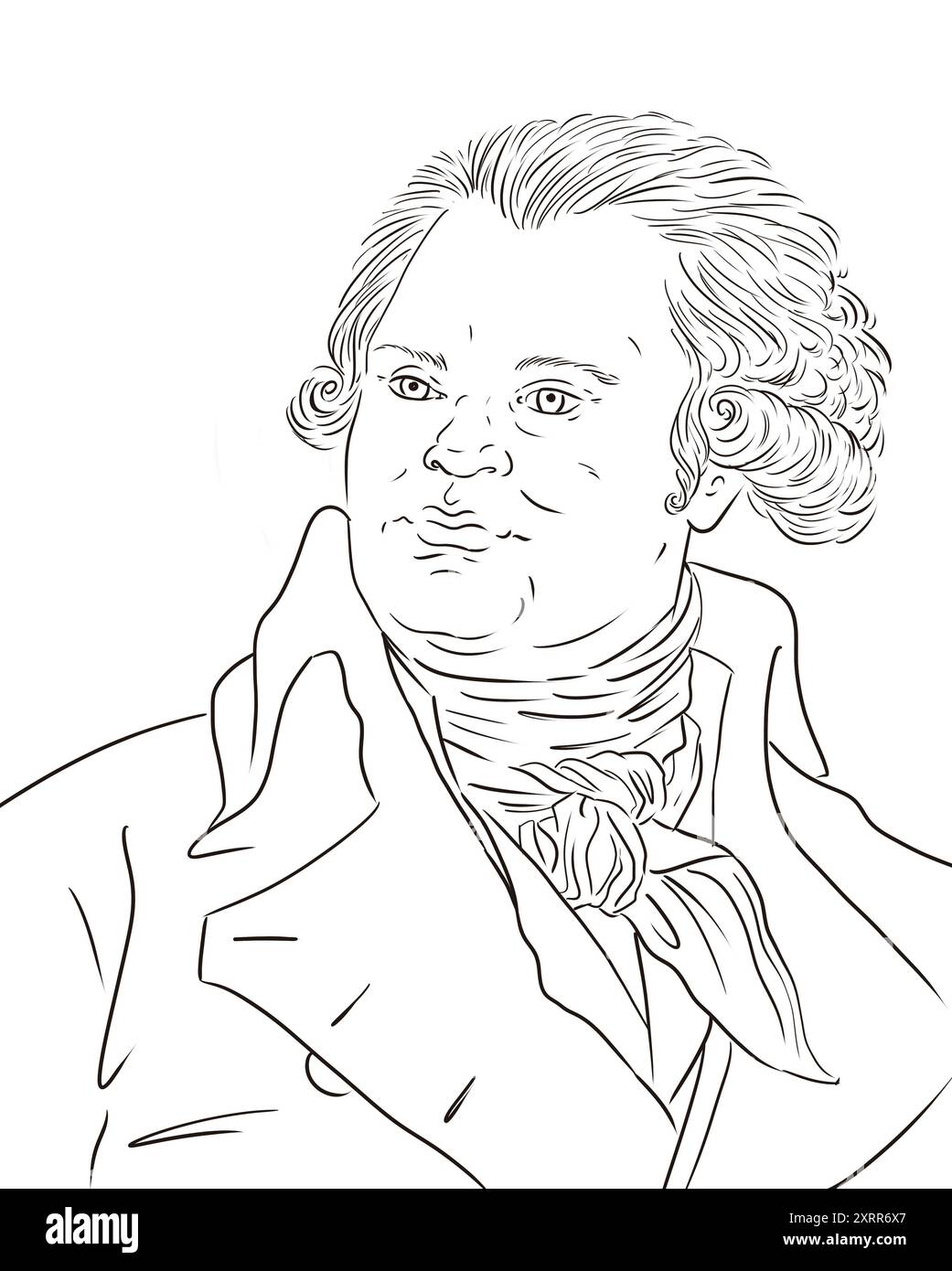 Portrait of Georges Danton, famous french revolutionary man Stock Photohttps://www.alamy.com/image-license-details/?v=1https://www.alamy.com/portrait-of-georges-danton-famous-french-revolutionary-man-image617010303.html
Portrait of Georges Danton, famous french revolutionary man Stock Photohttps://www.alamy.com/image-license-details/?v=1https://www.alamy.com/portrait-of-georges-danton-famous-french-revolutionary-man-image617010303.htmlRM2XRR6X7–Portrait of Georges Danton, famous french revolutionary man
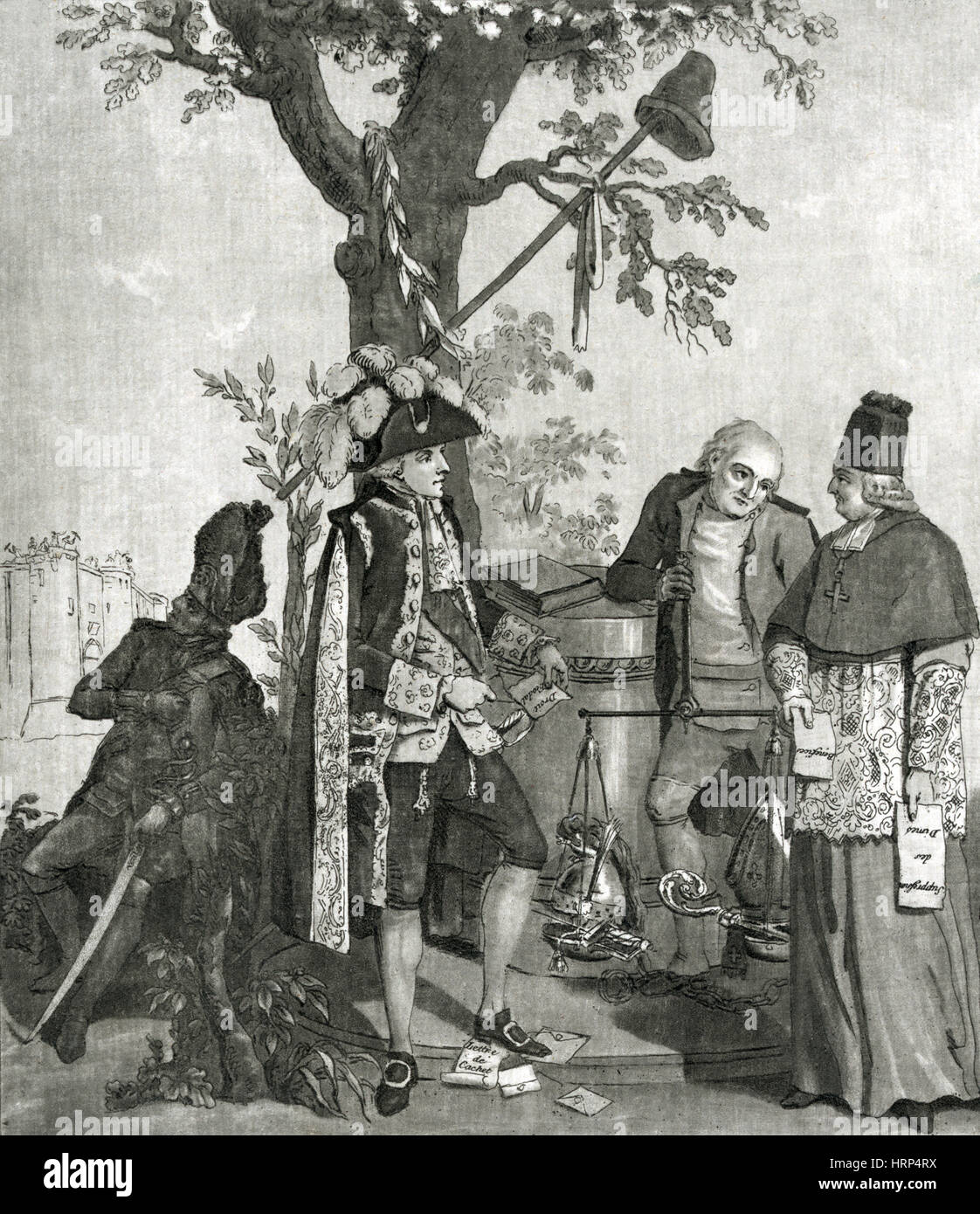 Abolishing Church Authority, 1789 Stock Photohttps://www.alamy.com/image-license-details/?v=1https://www.alamy.com/stock-photo-abolishing-church-authority-1789-135096414.html
Abolishing Church Authority, 1789 Stock Photohttps://www.alamy.com/image-license-details/?v=1https://www.alamy.com/stock-photo-abolishing-church-authority-1789-135096414.htmlRMHRP4RX–Abolishing Church Authority, 1789
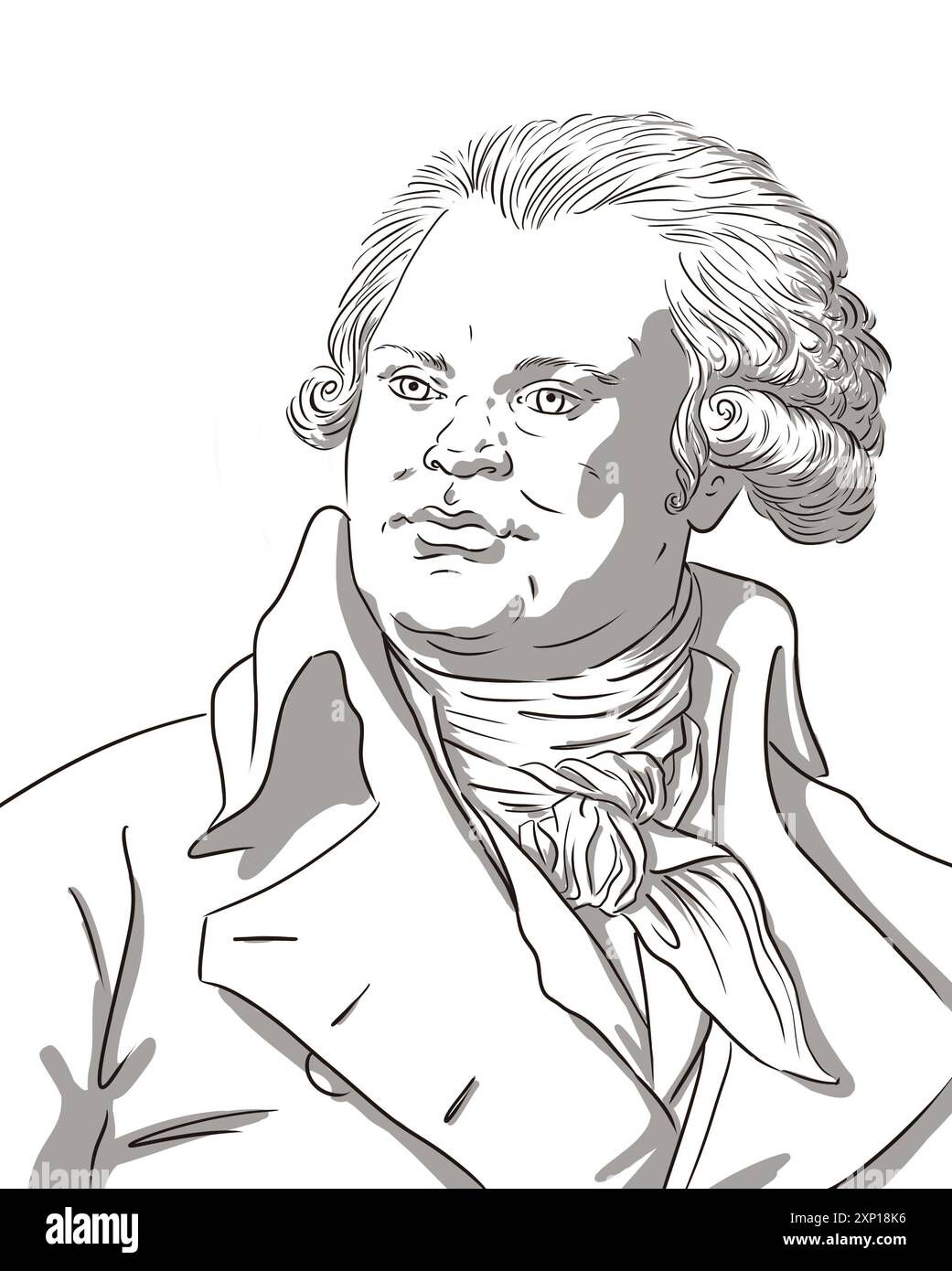 Portrait of Georges Danton, famous french revolutionary man Stock Photohttps://www.alamy.com/image-license-details/?v=1https://www.alamy.com/portrait-of-georges-danton-famous-french-revolutionary-man-image615914074.html
Portrait of Georges Danton, famous french revolutionary man Stock Photohttps://www.alamy.com/image-license-details/?v=1https://www.alamy.com/portrait-of-georges-danton-famous-french-revolutionary-man-image615914074.htmlRM2XP18K6–Portrait of Georges Danton, famous french revolutionary man
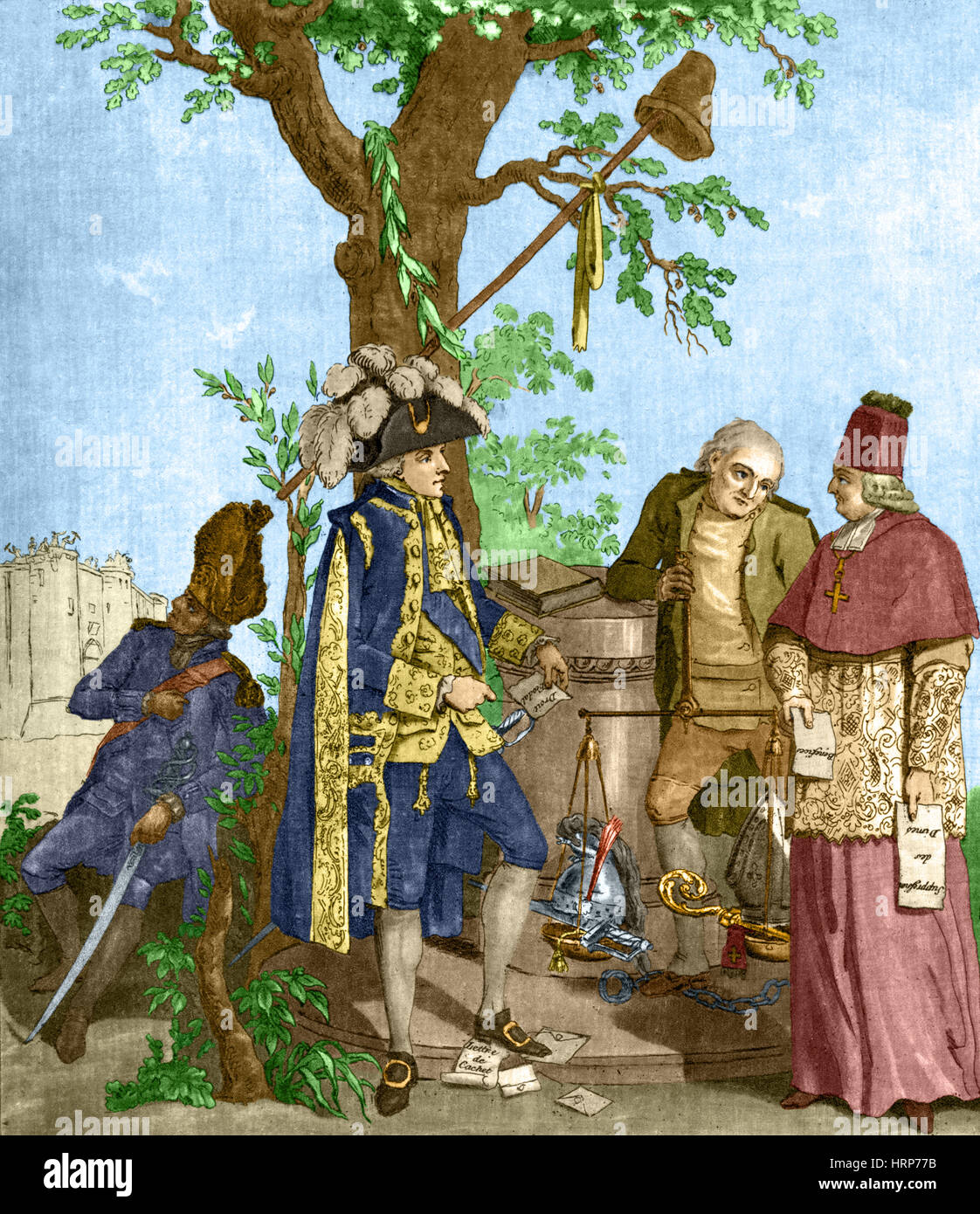 Abolishing Church Authority, 1789 Stock Photohttps://www.alamy.com/image-license-details/?v=1https://www.alamy.com/stock-photo-abolishing-church-authority-1789-135098303.html
Abolishing Church Authority, 1789 Stock Photohttps://www.alamy.com/image-license-details/?v=1https://www.alamy.com/stock-photo-abolishing-church-authority-1789-135098303.htmlRMHRP77B–Abolishing Church Authority, 1789
 Portraits of Robespierre, Danton and Marat, men of the french revolution Stock Photohttps://www.alamy.com/image-license-details/?v=1https://www.alamy.com/portraits-of-robespierre-danton-and-marat-men-of-the-french-revolution-image617743964.html
Portraits of Robespierre, Danton and Marat, men of the french revolution Stock Photohttps://www.alamy.com/image-license-details/?v=1https://www.alamy.com/portraits-of-robespierre-danton-and-marat-men-of-the-french-revolution-image617743964.htmlRM2XW0JMC–Portraits of Robespierre, Danton and Marat, men of the french revolution
 Portraits of Robespierre, Danton and Marat, men of the french revolution Stock Photohttps://www.alamy.com/image-license-details/?v=1https://www.alamy.com/portraits-of-robespierre-danton-and-marat-men-of-the-french-revolution-image615914149.html
Portraits of Robespierre, Danton and Marat, men of the french revolution Stock Photohttps://www.alamy.com/image-license-details/?v=1https://www.alamy.com/portraits-of-robespierre-danton-and-marat-men-of-the-french-revolution-image615914149.htmlRM2XP18NW–Portraits of Robespierre, Danton and Marat, men of the french revolution